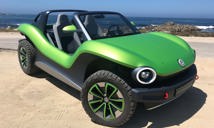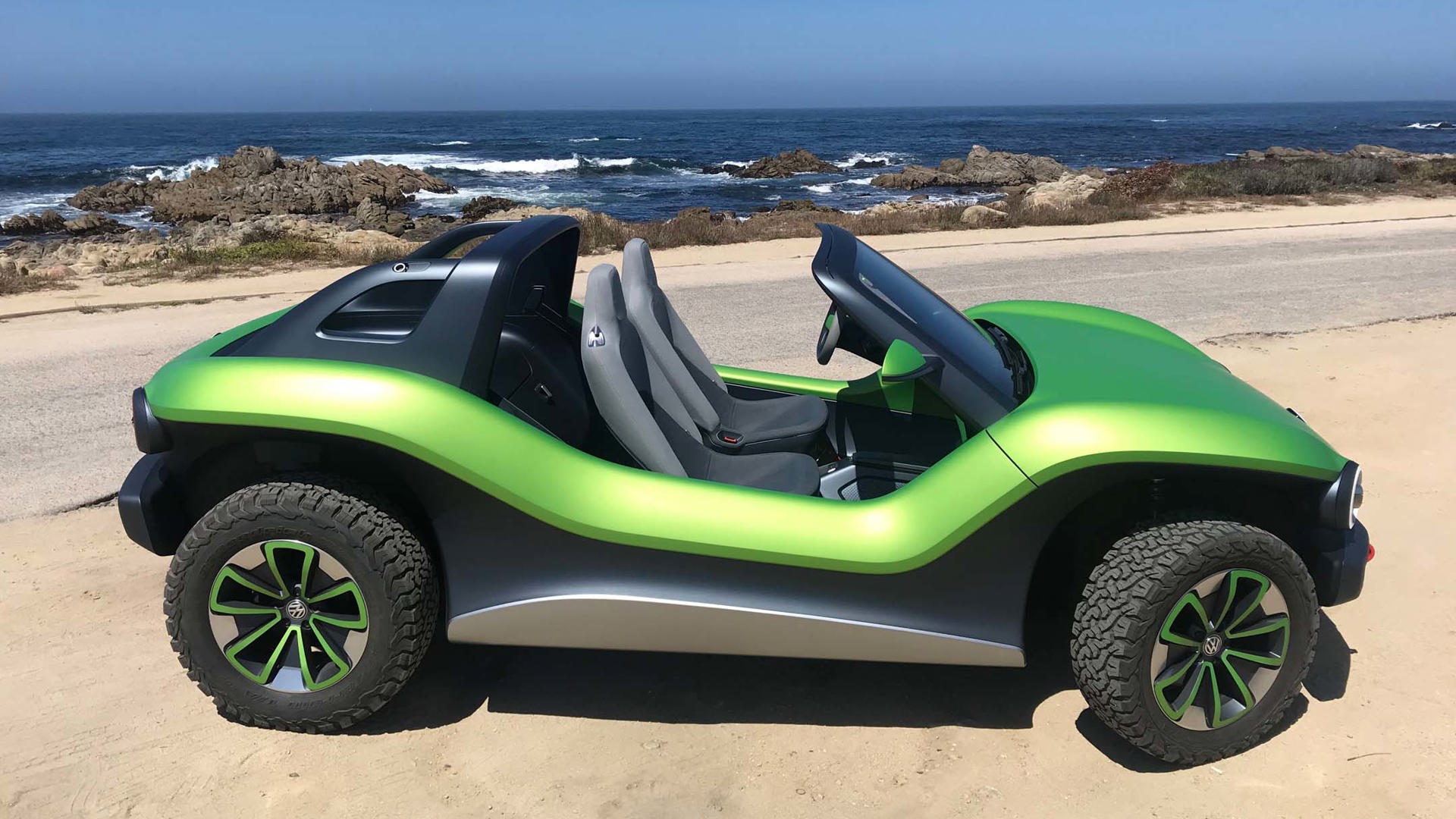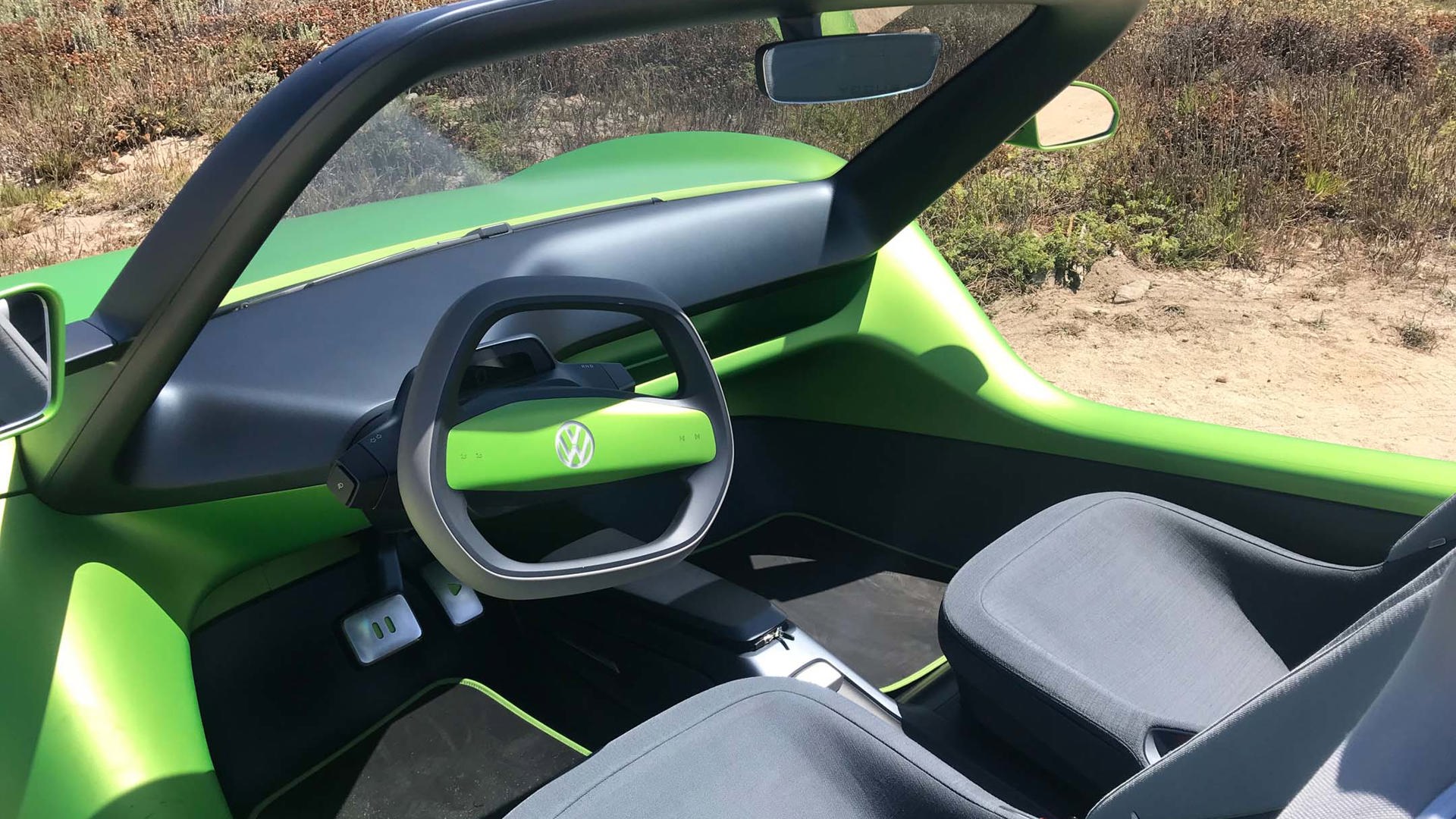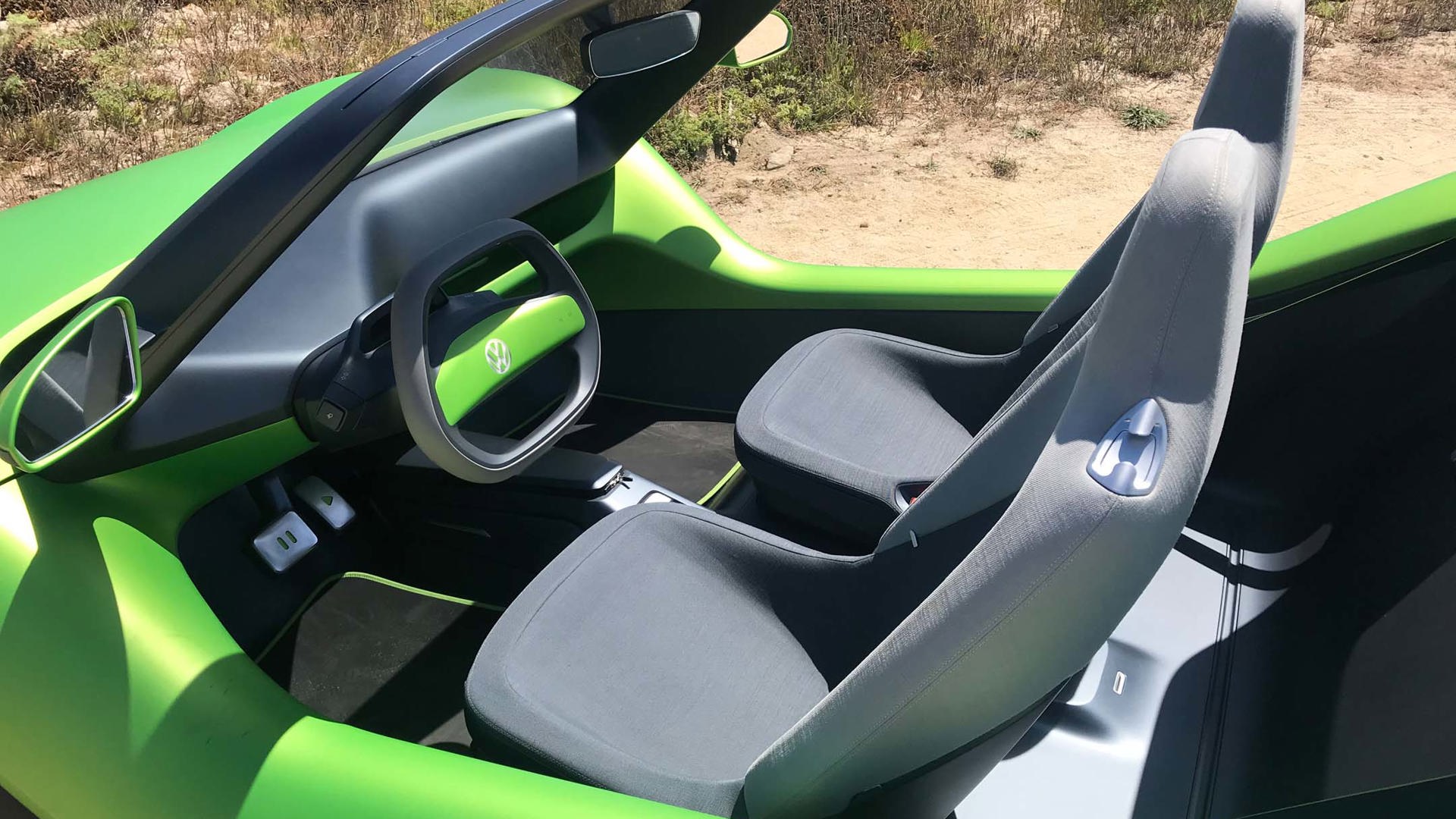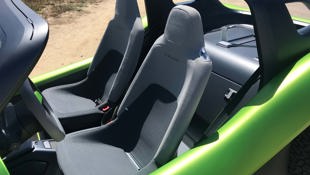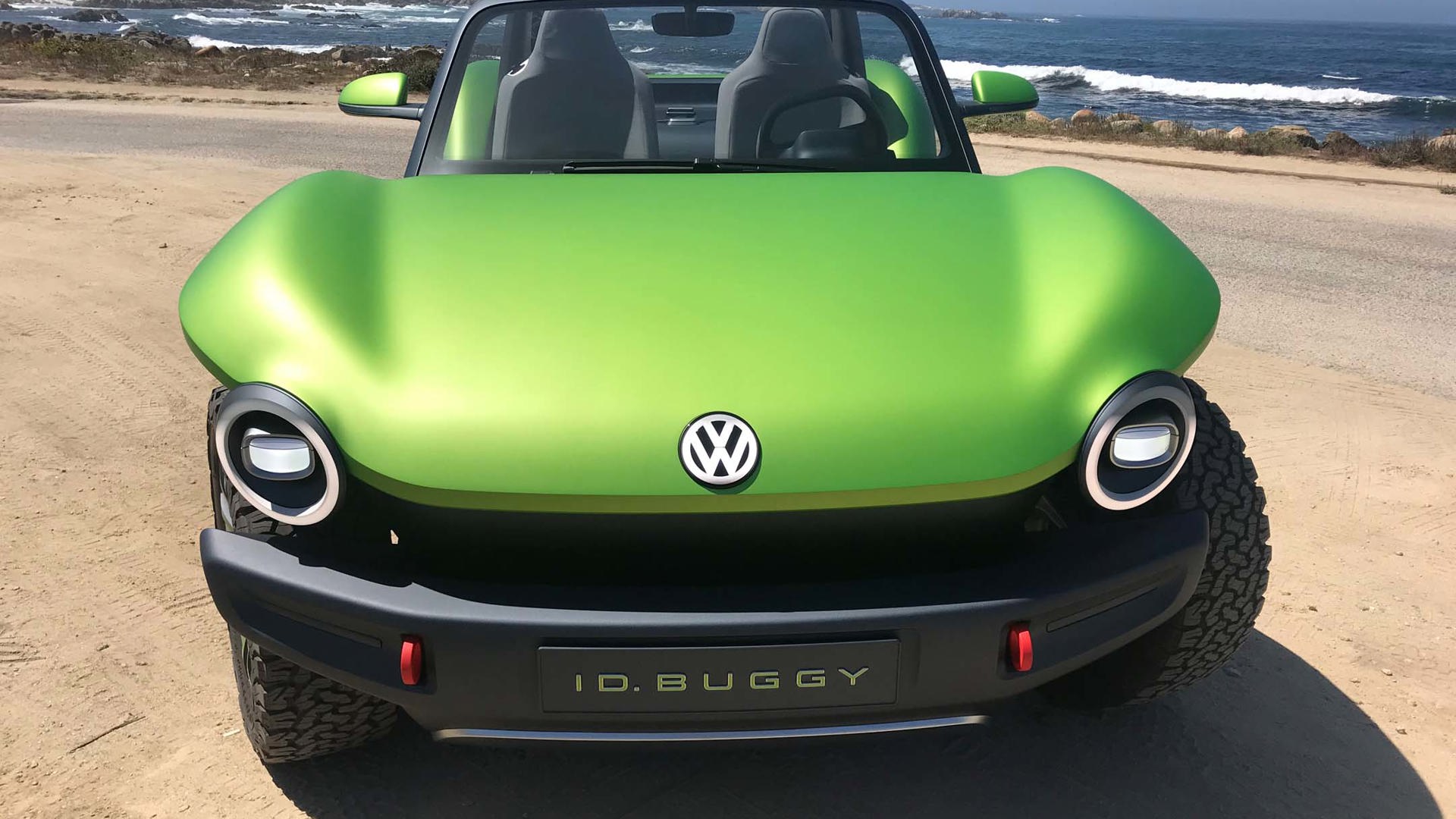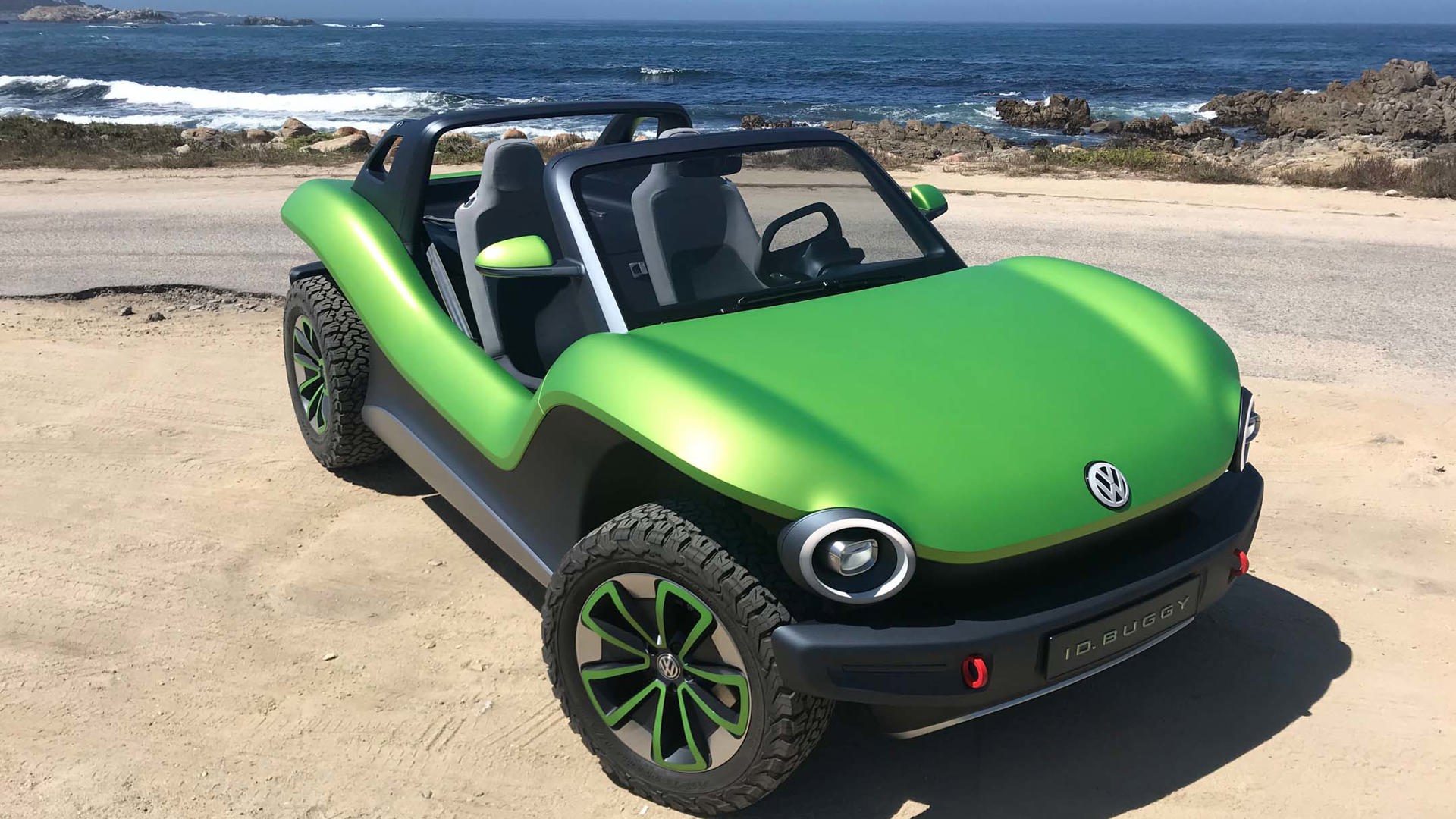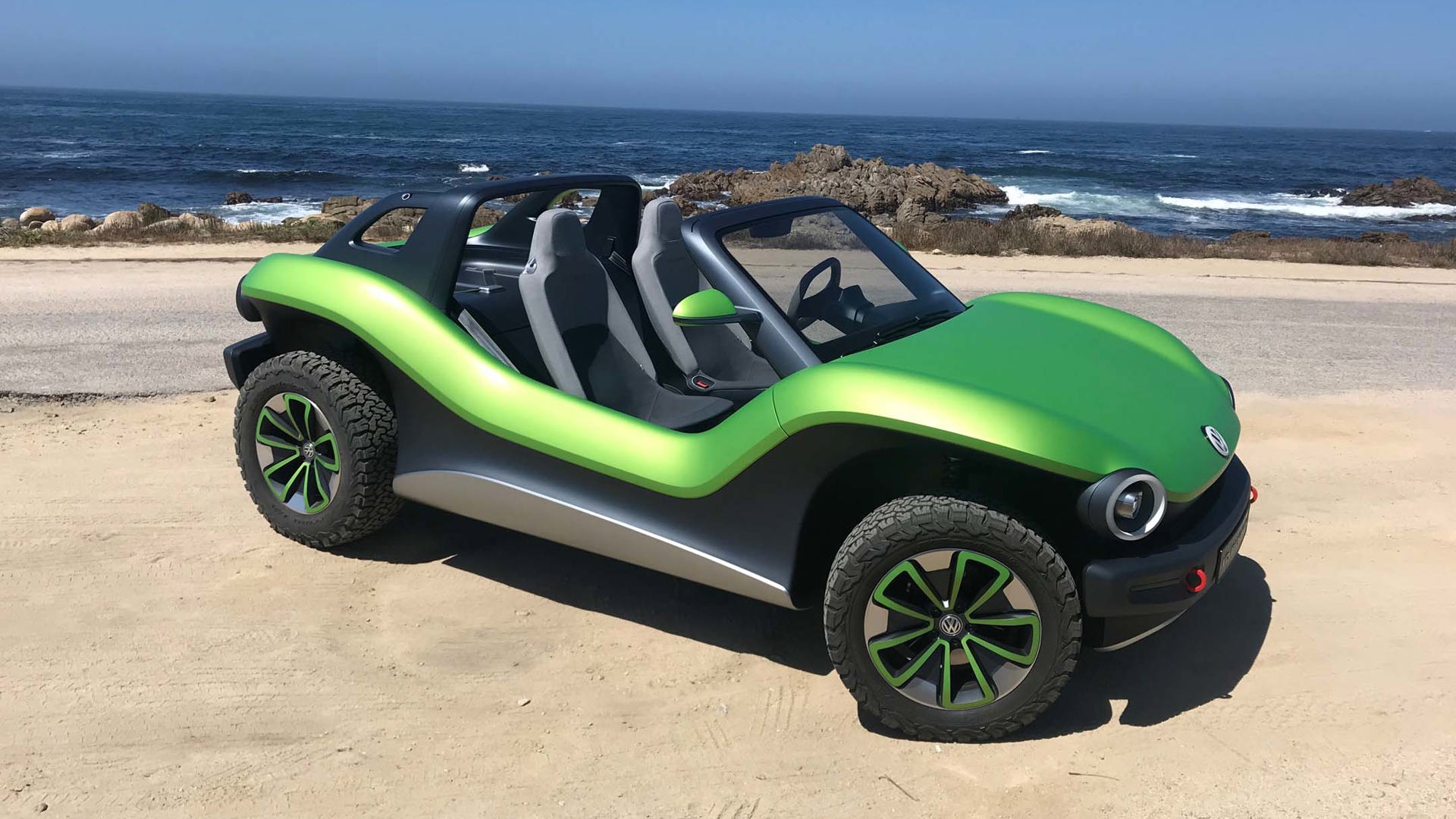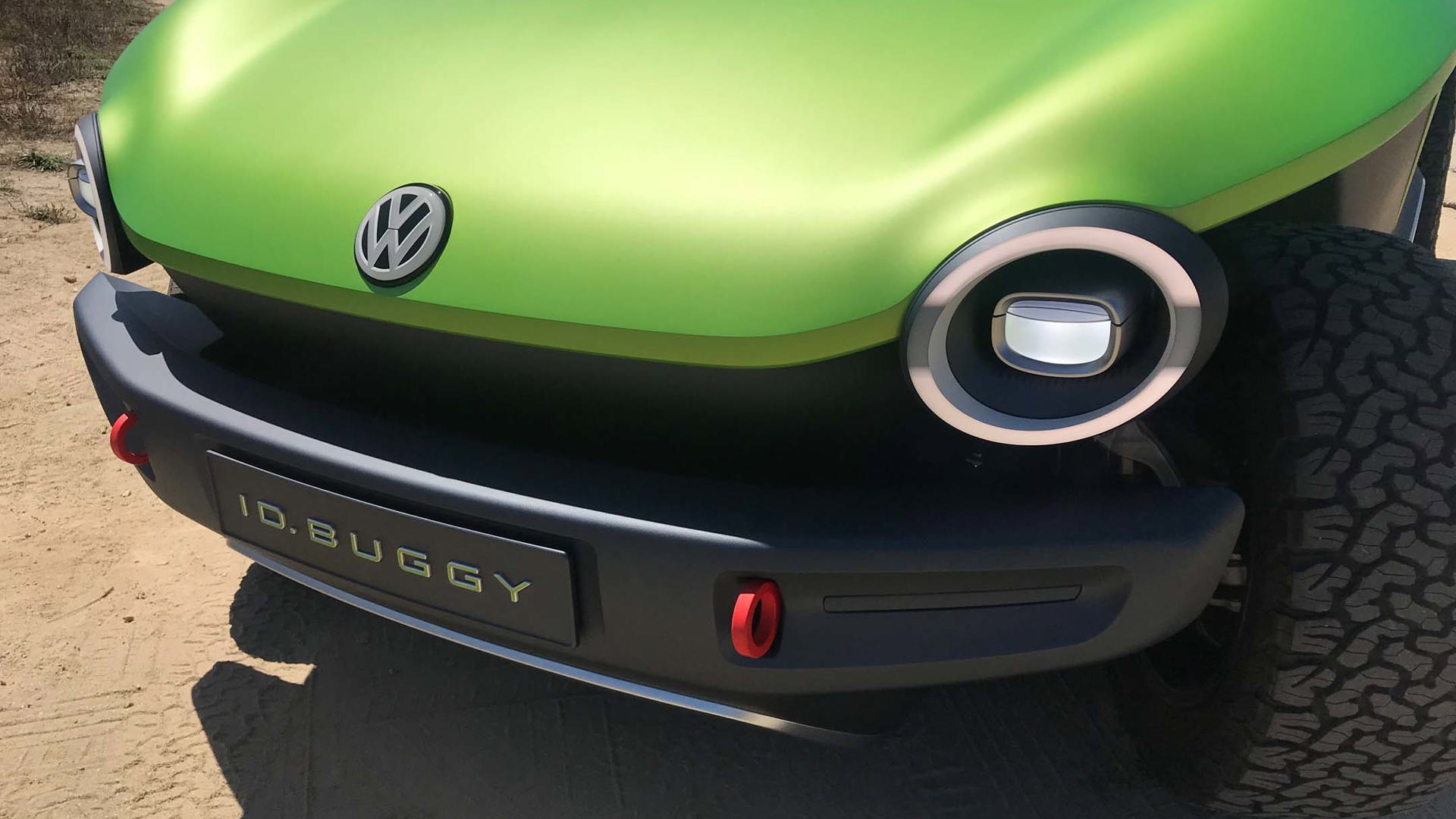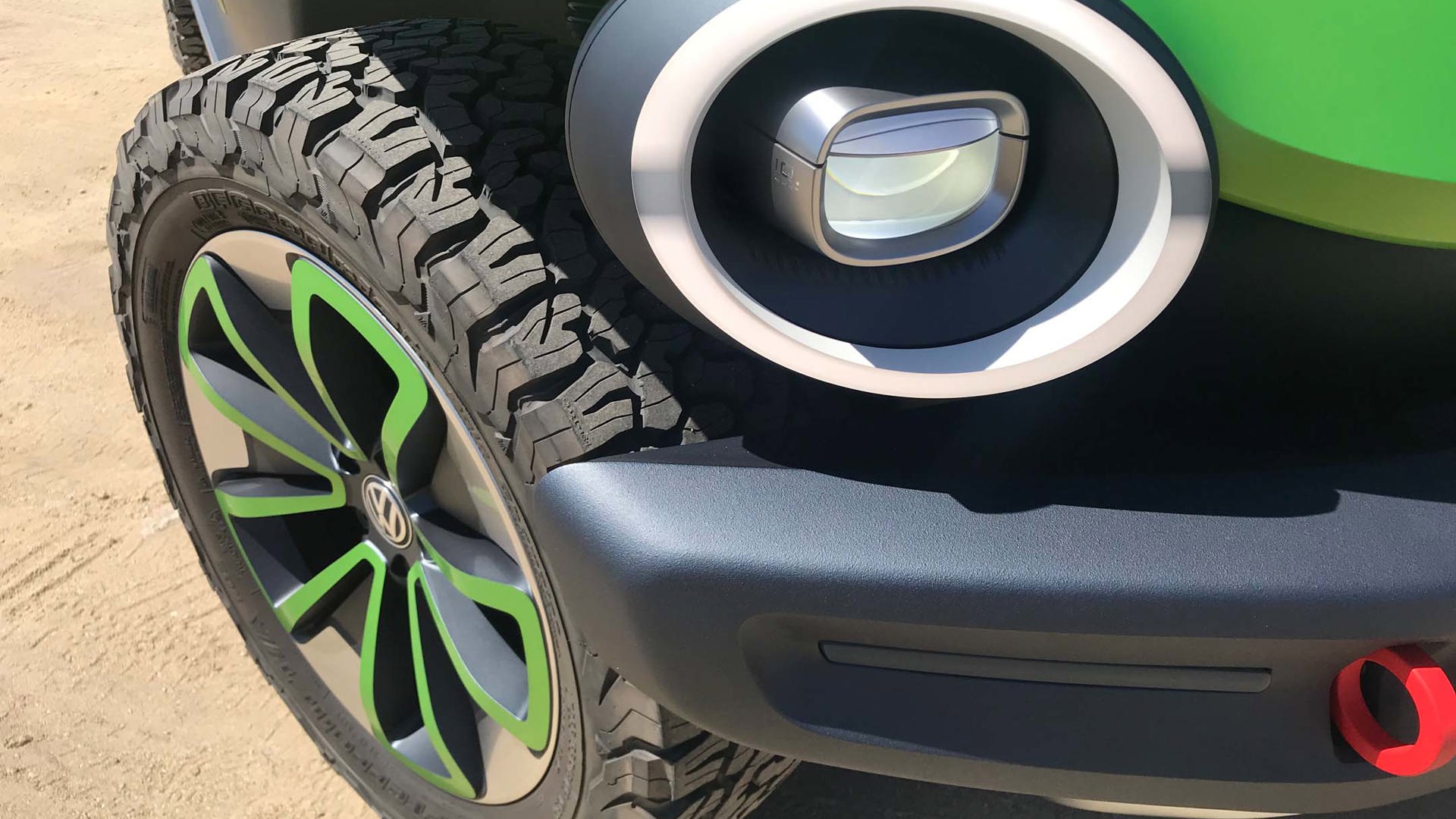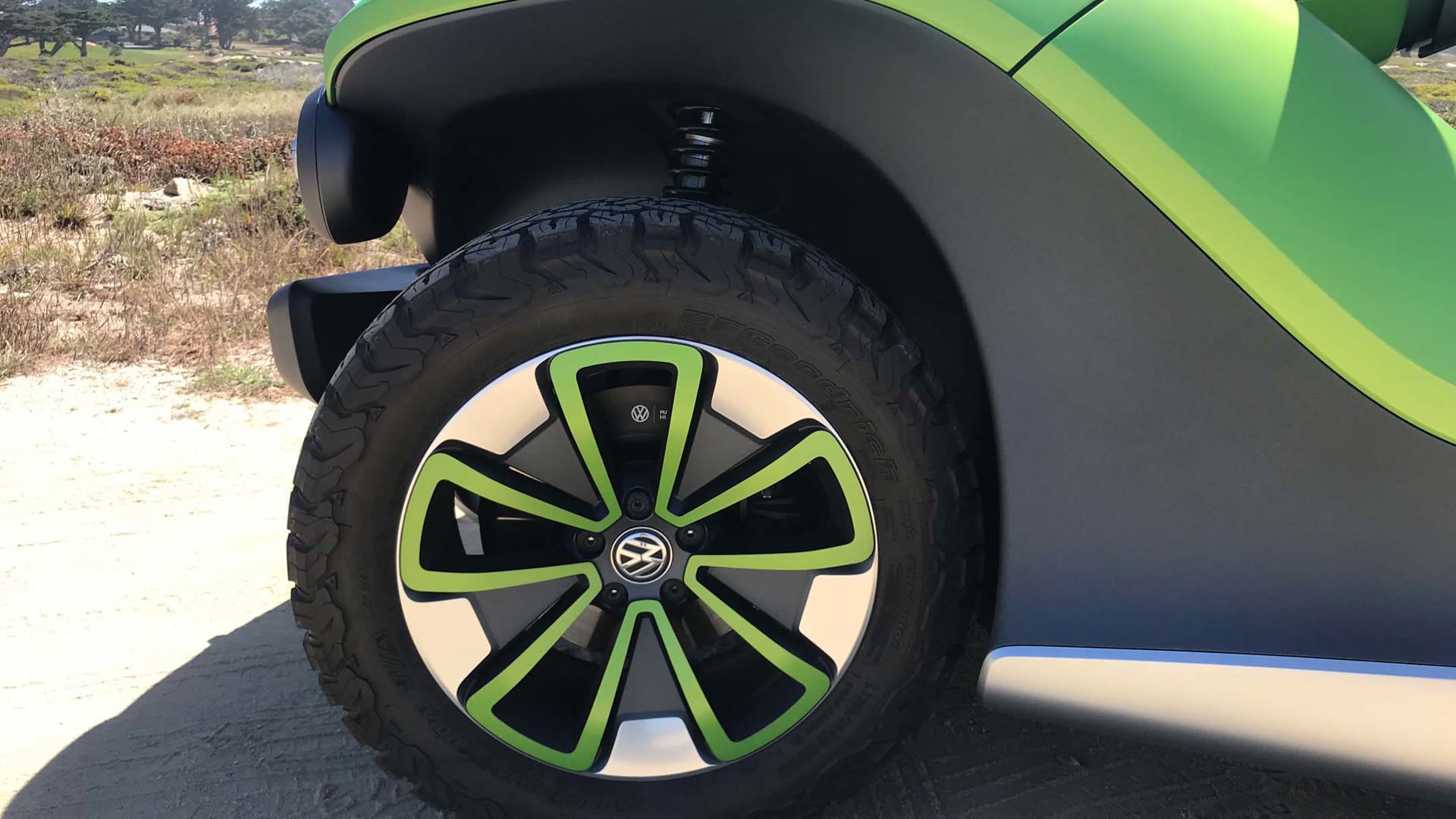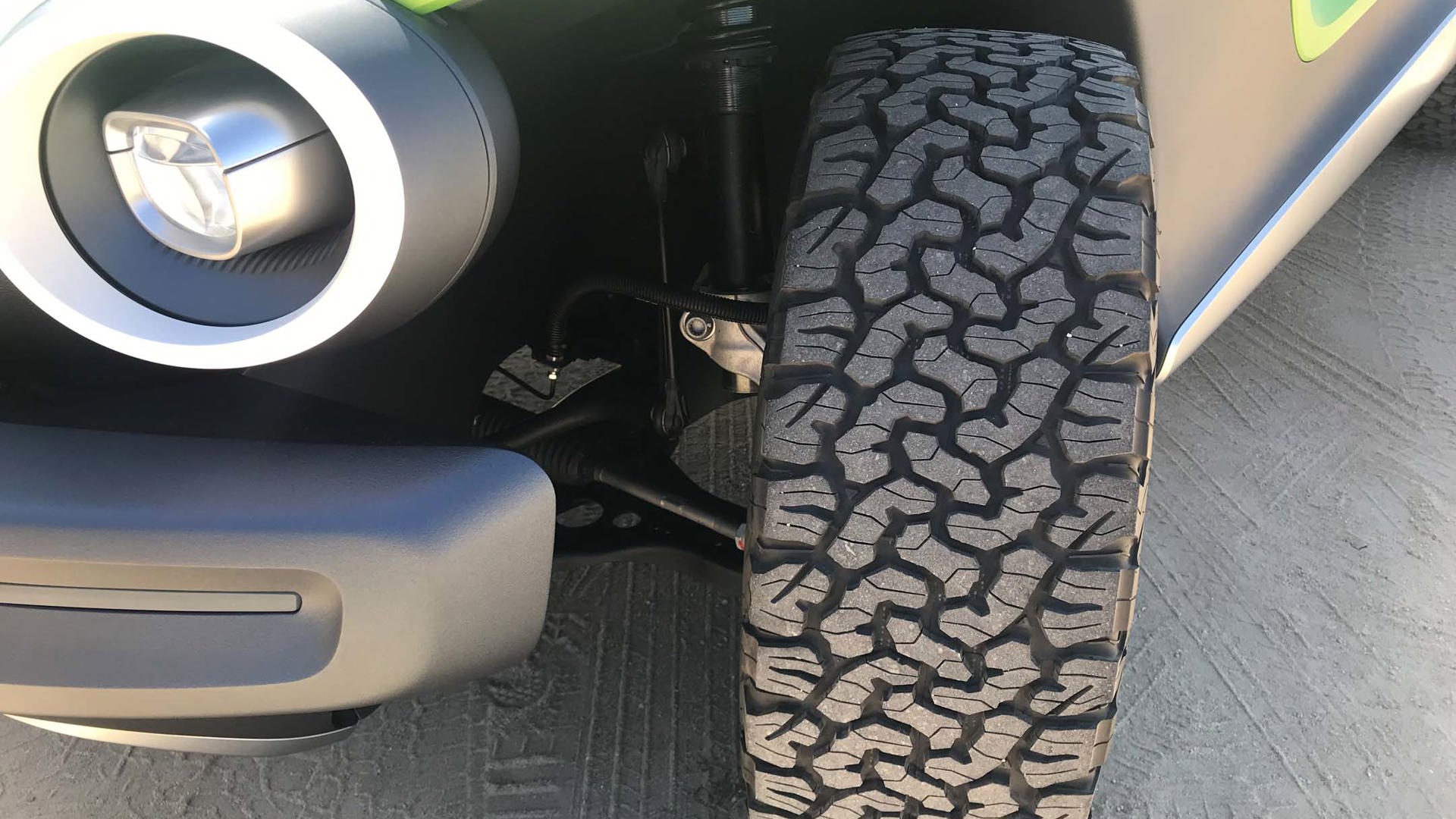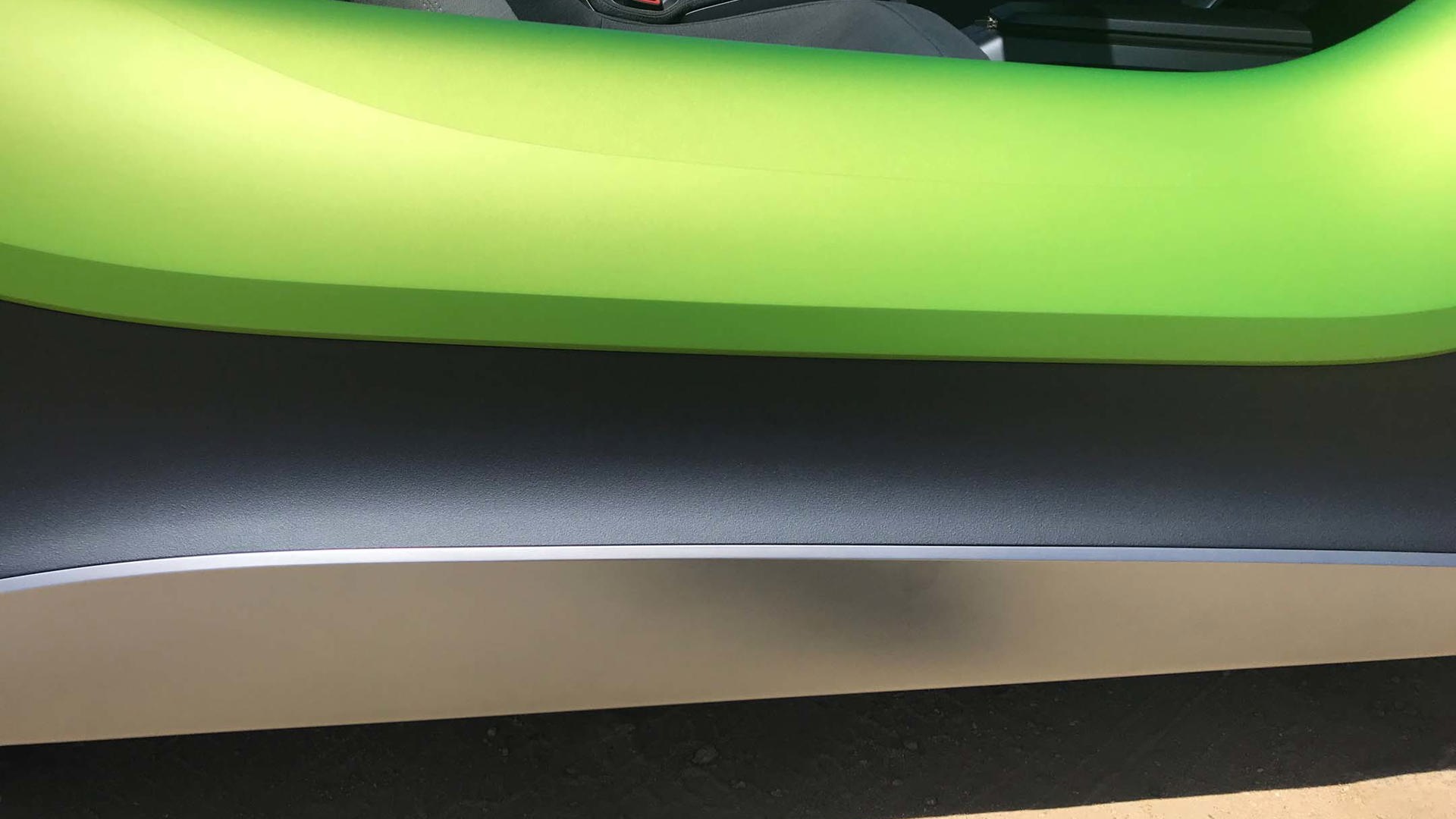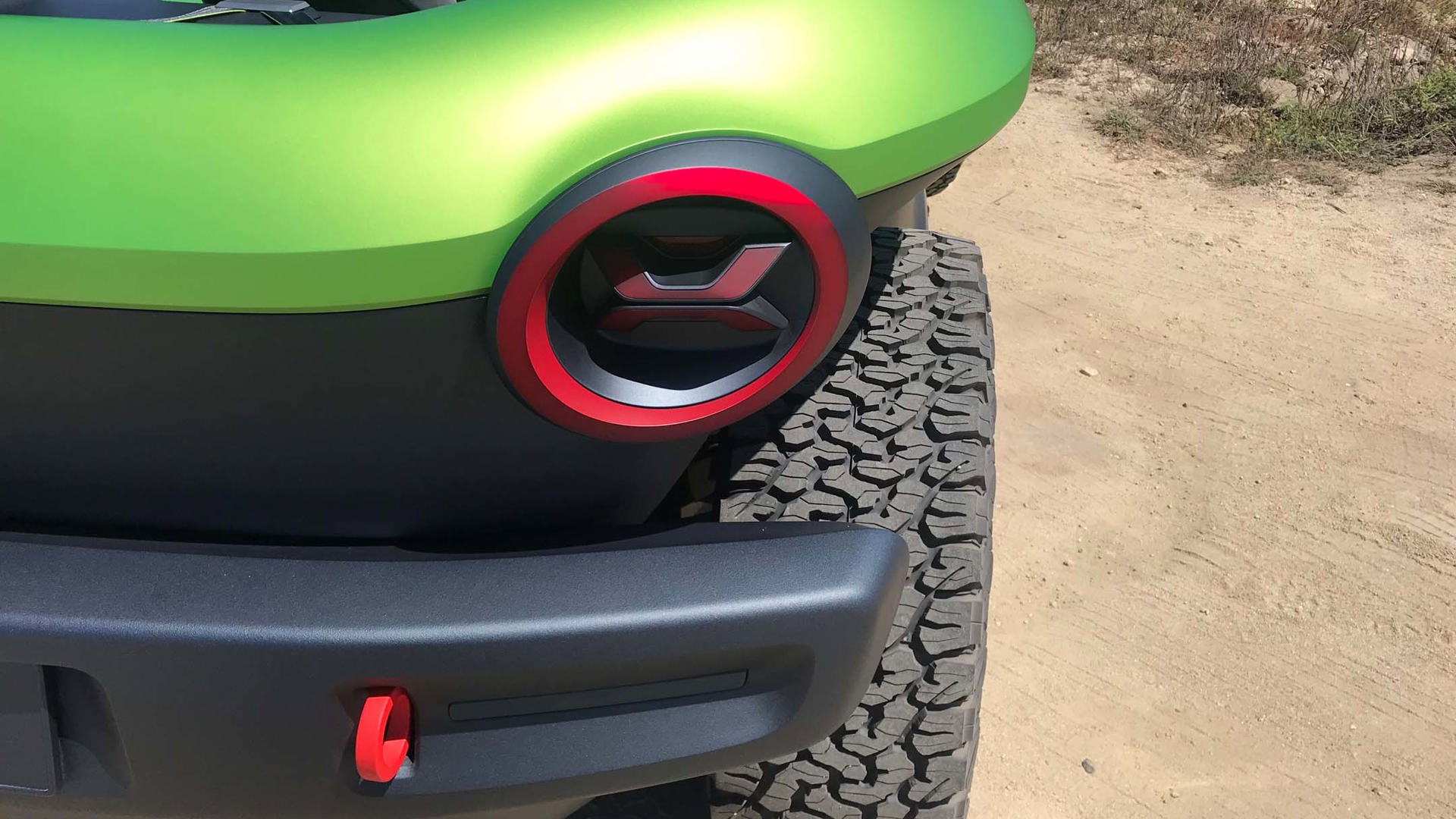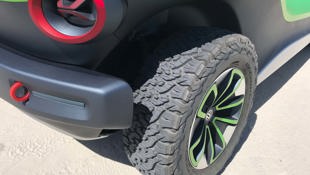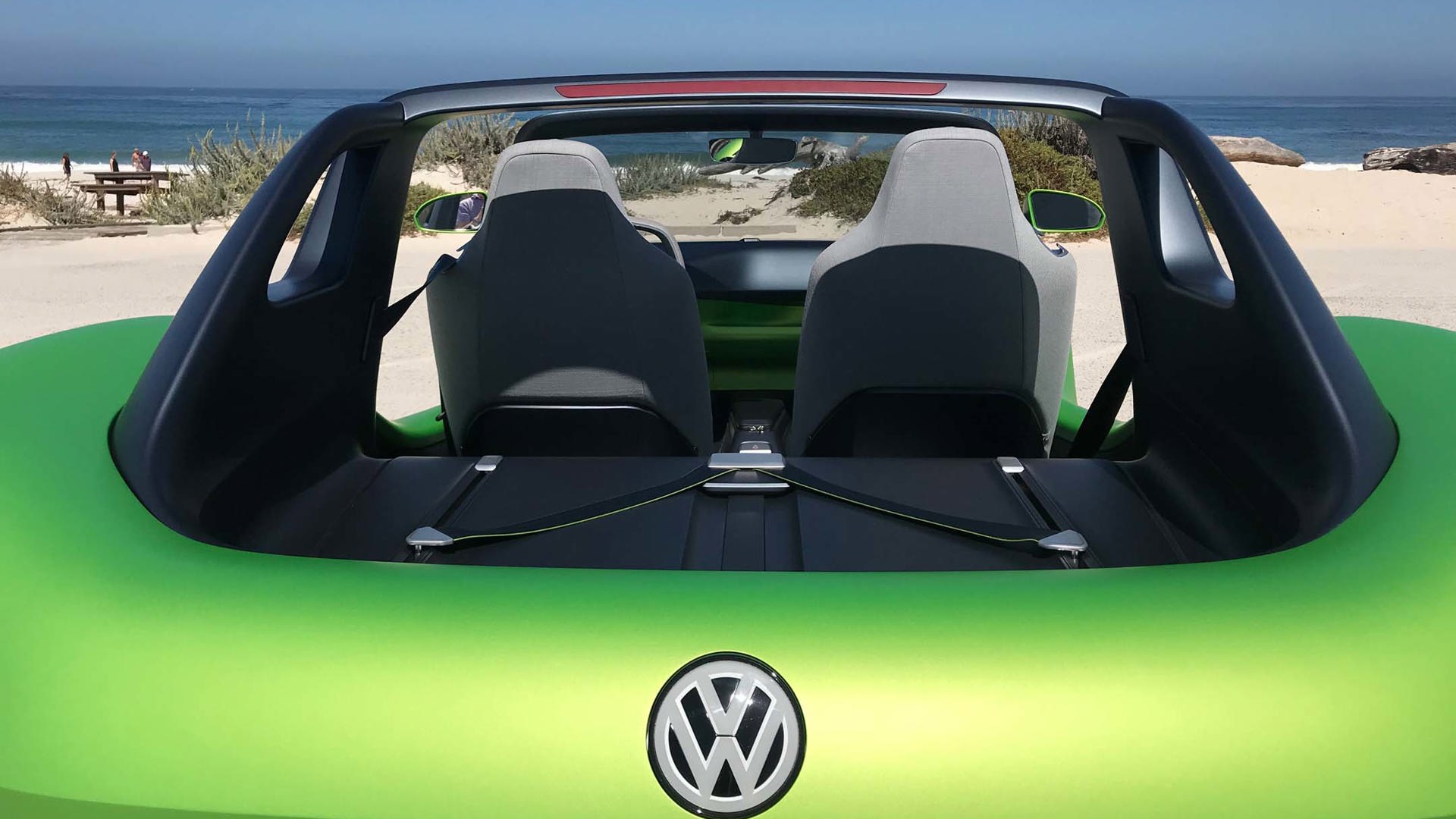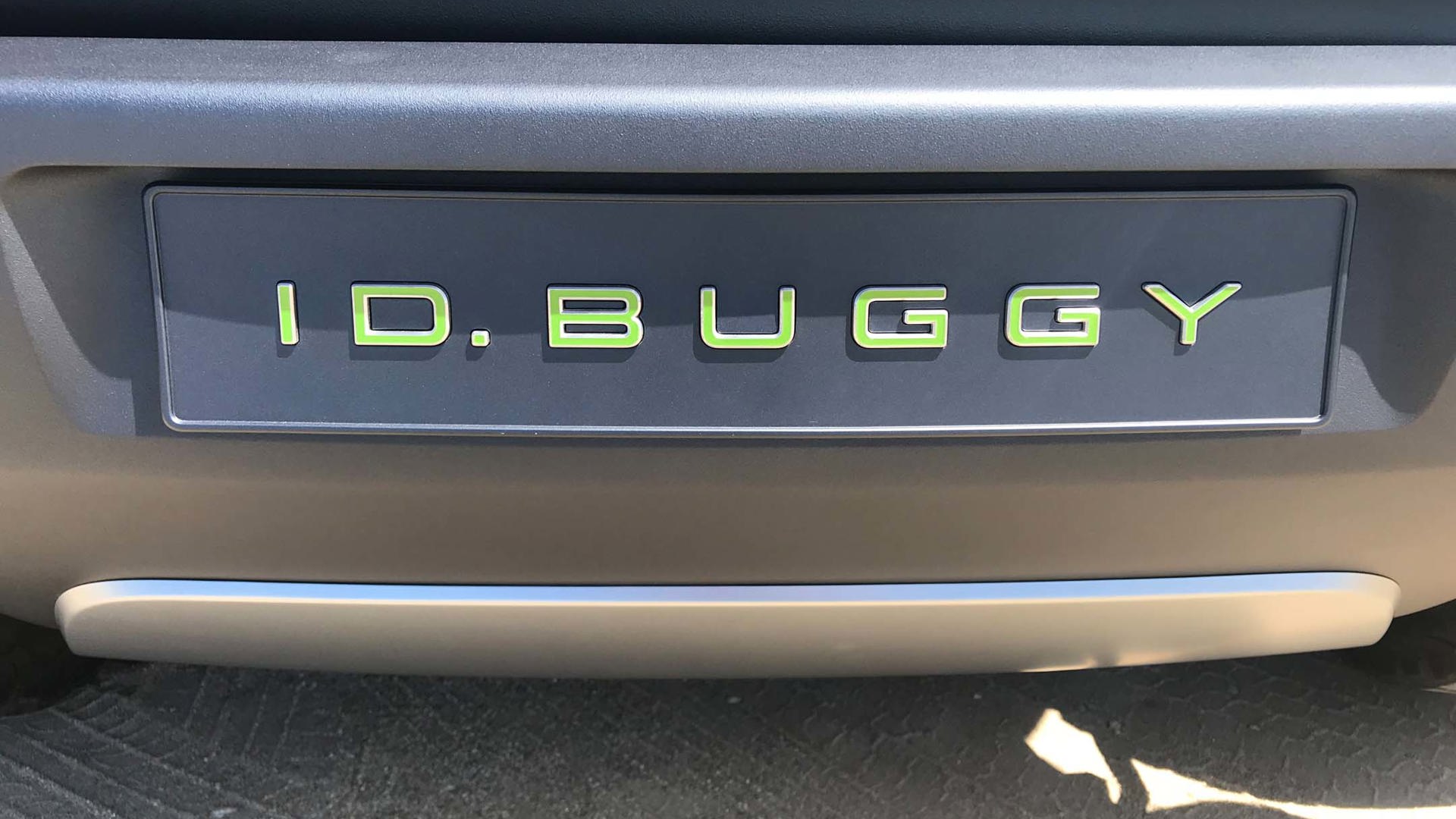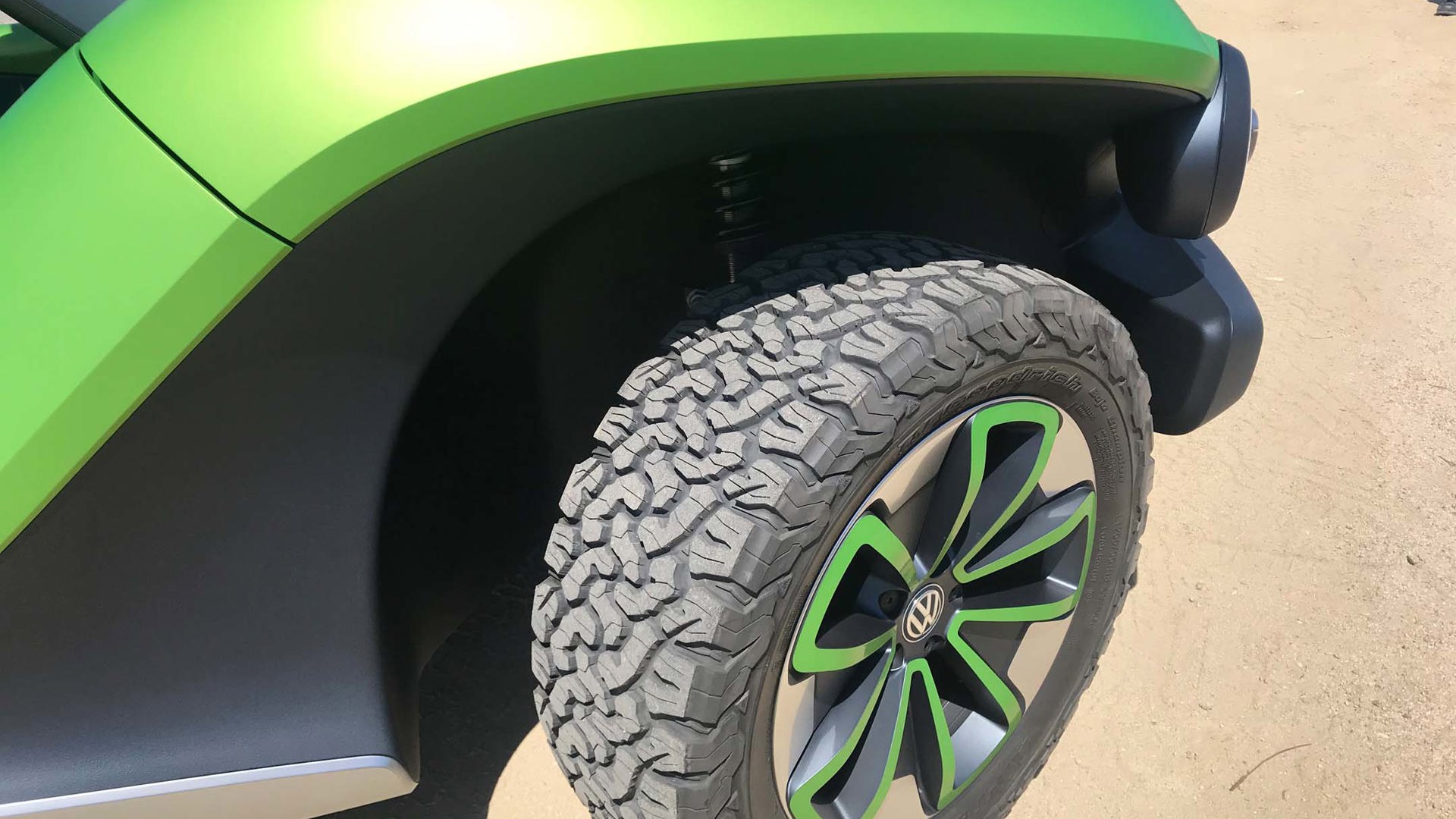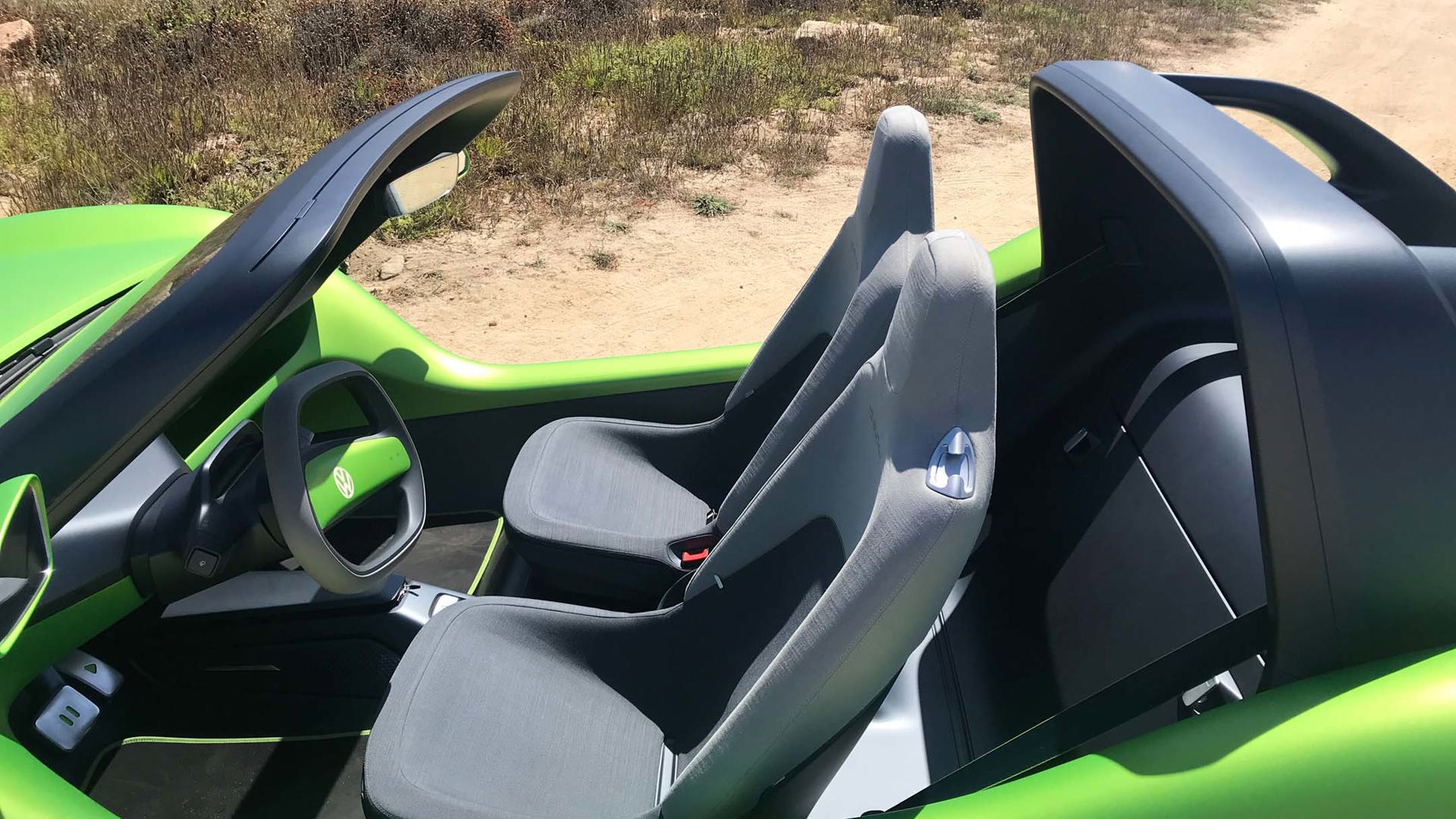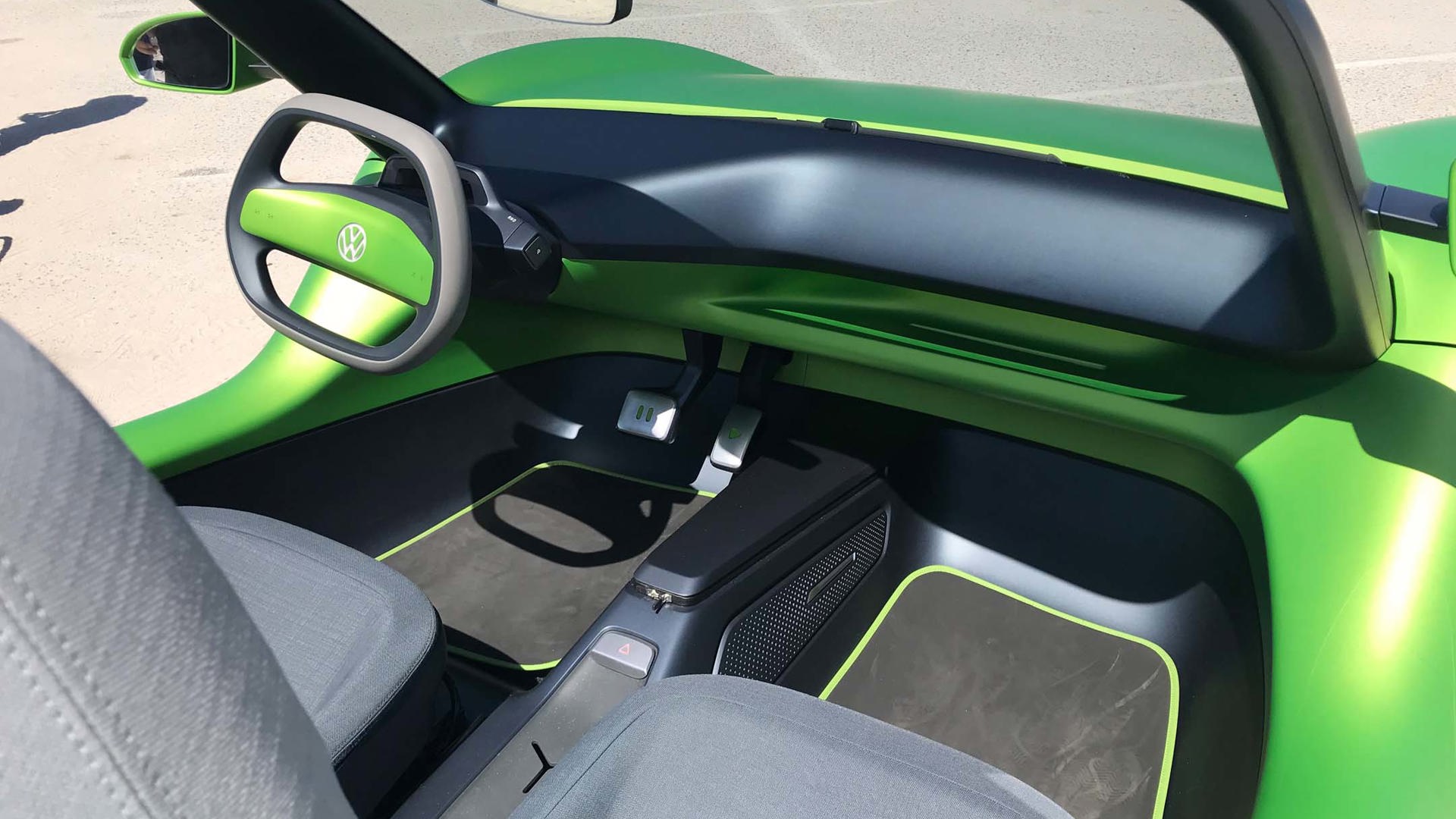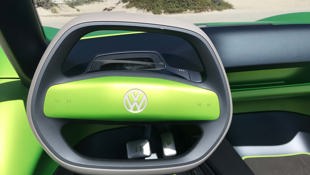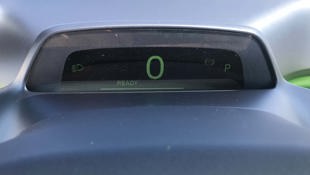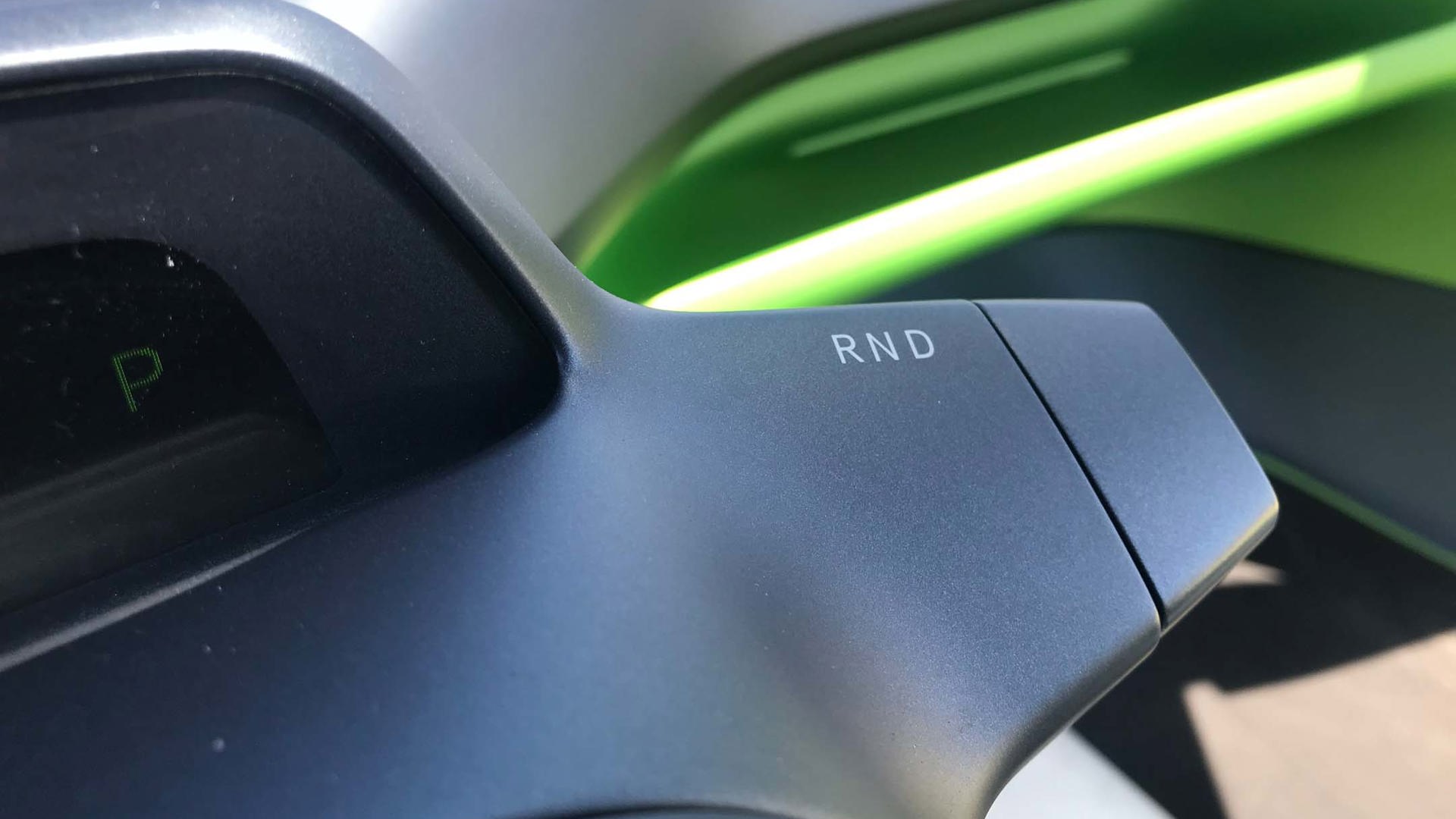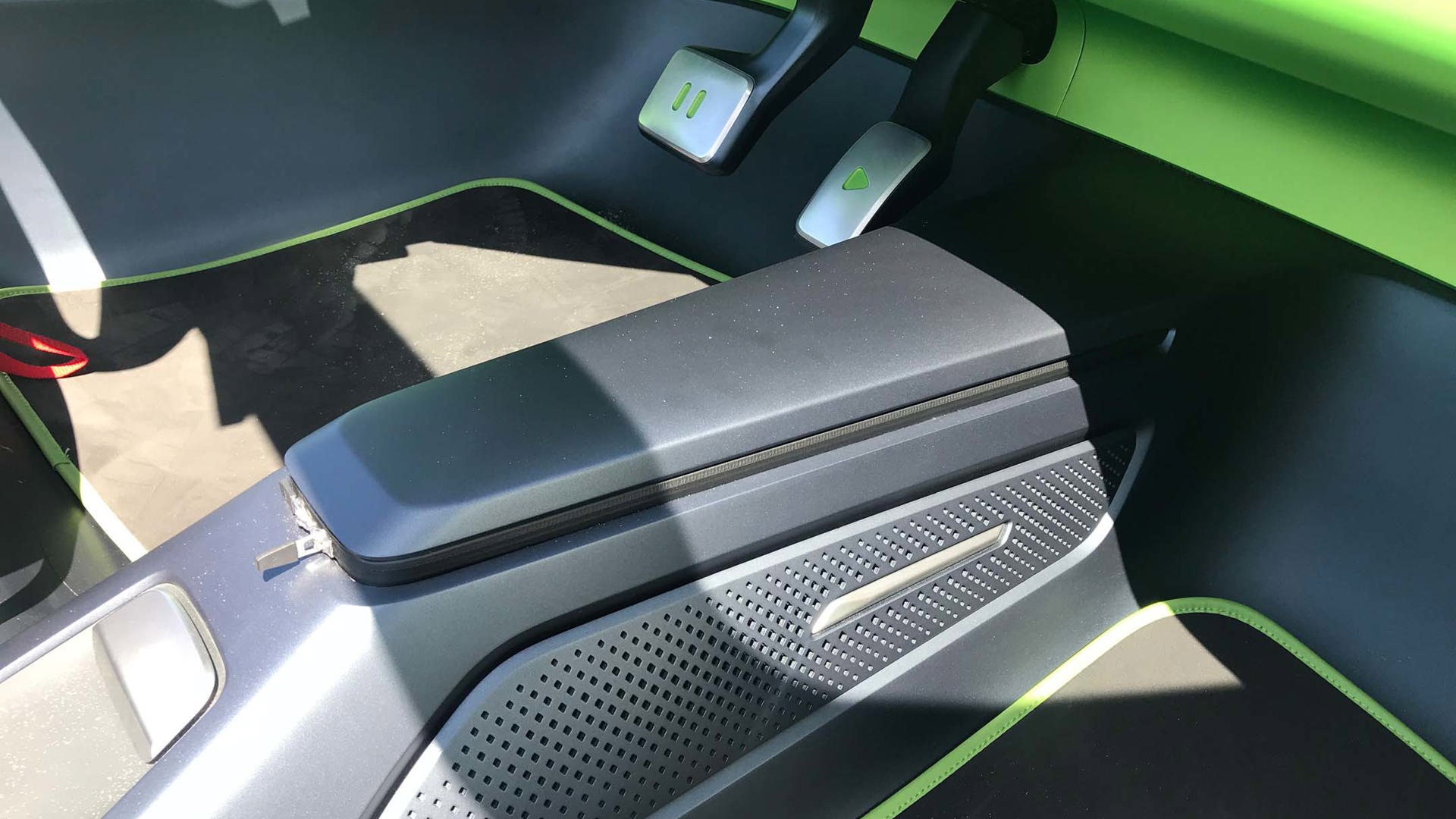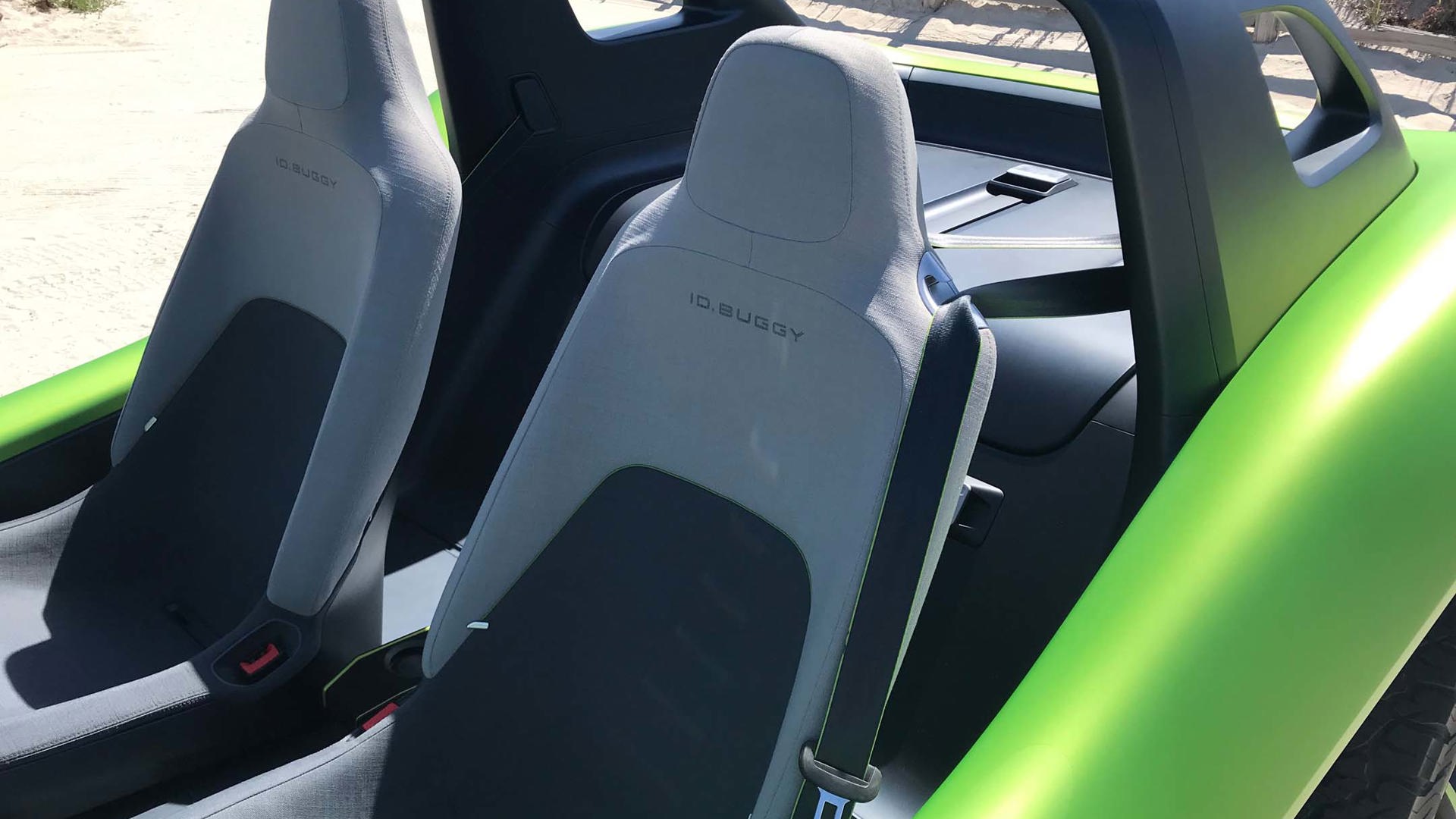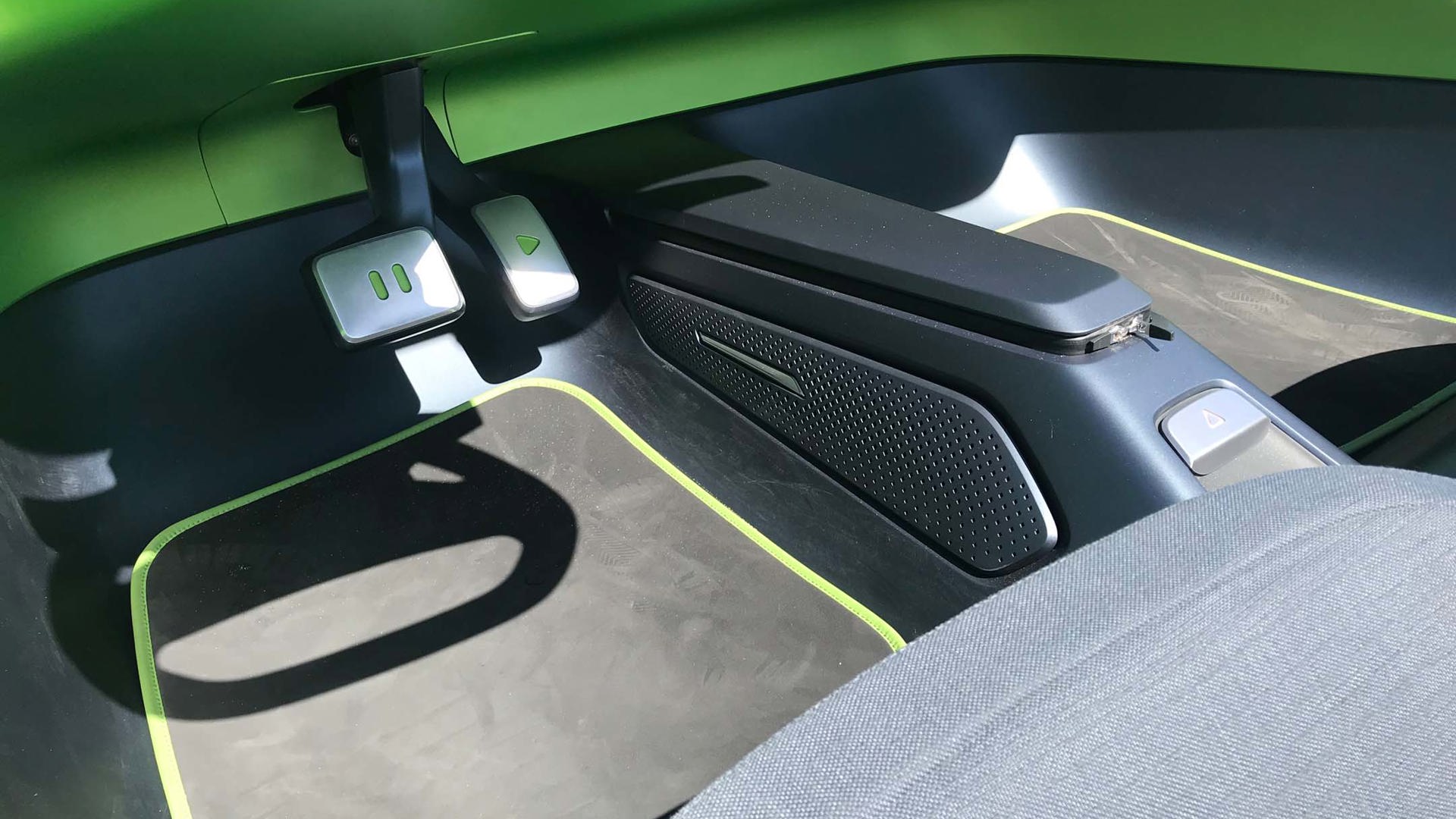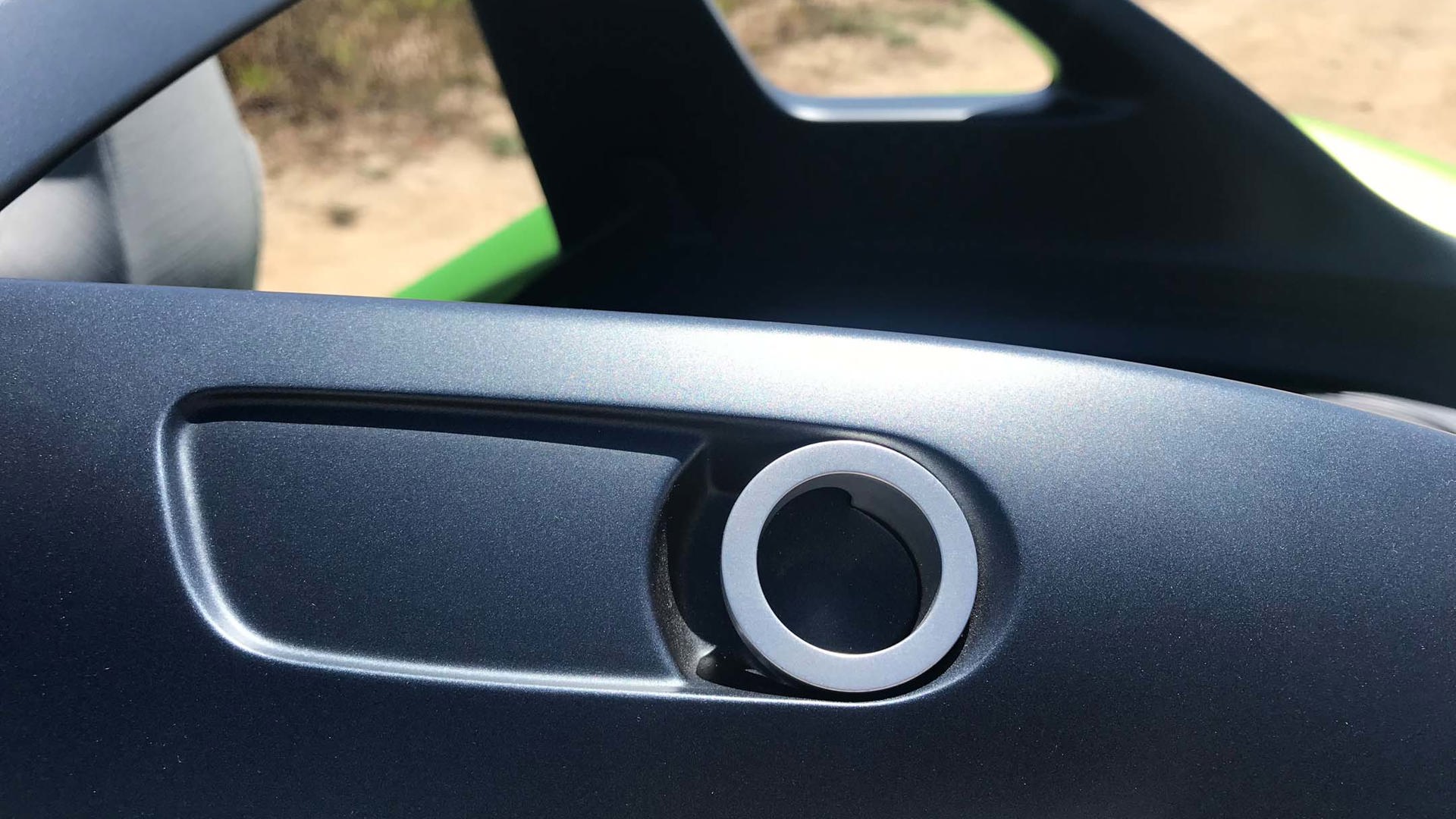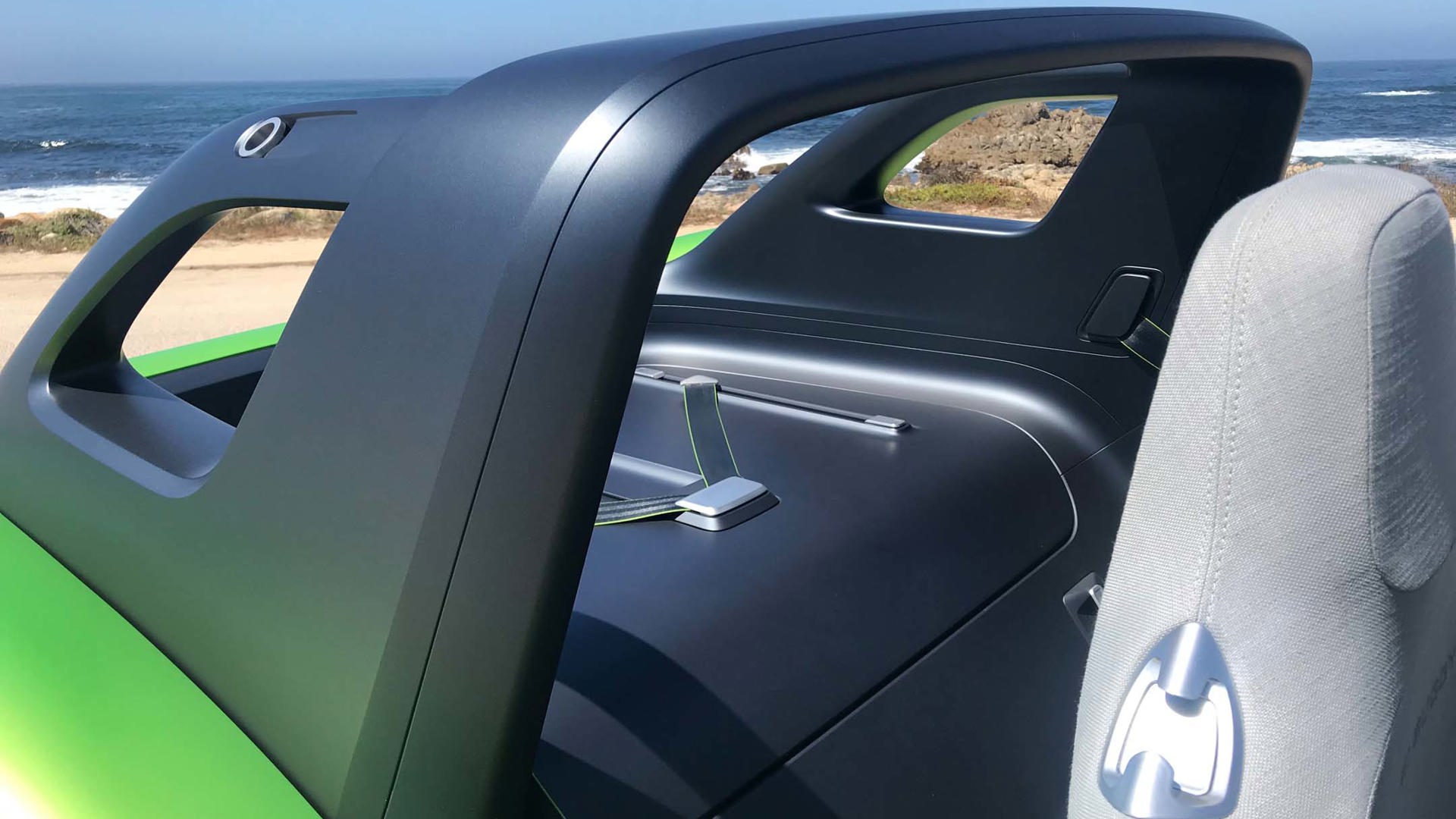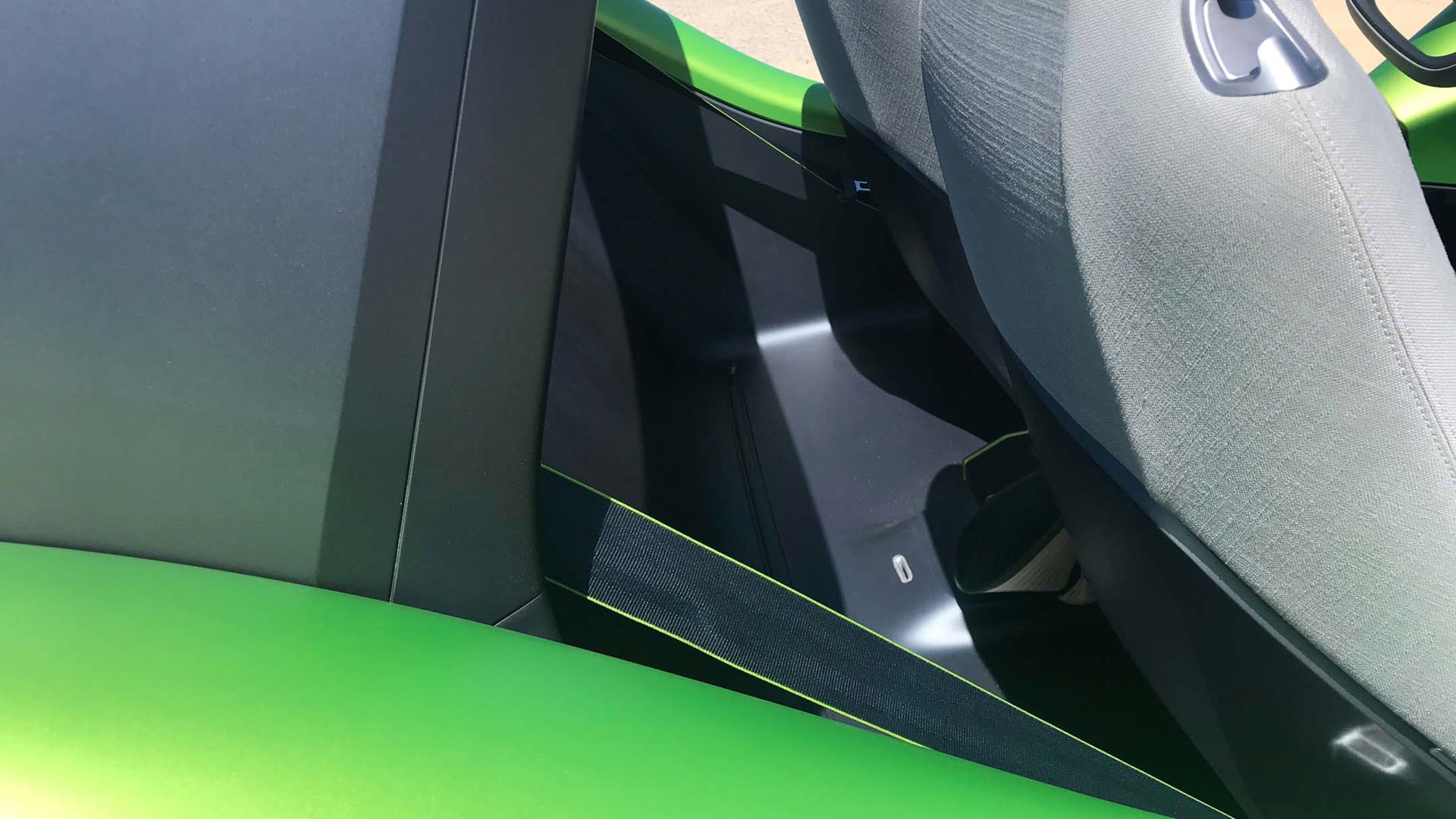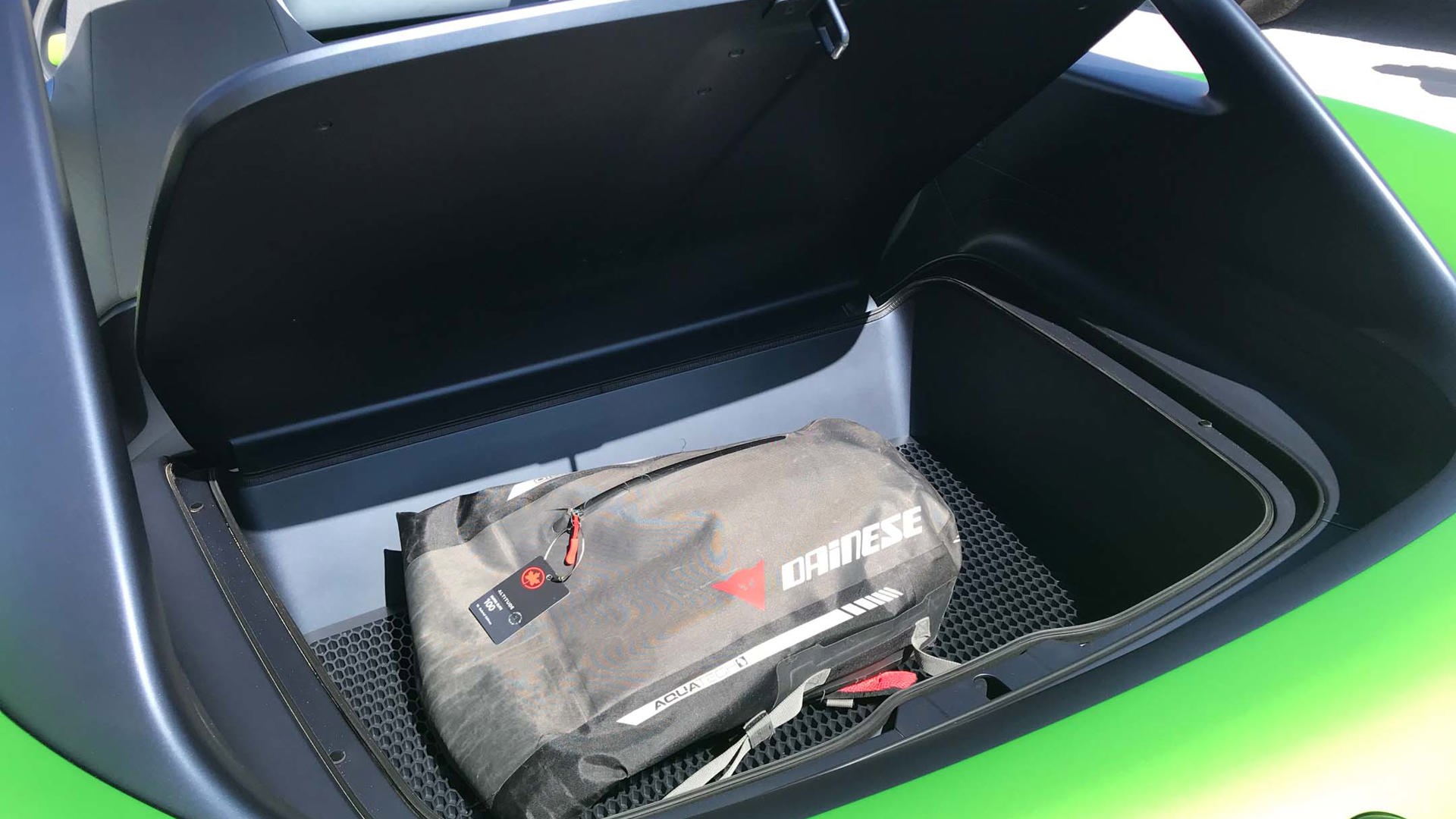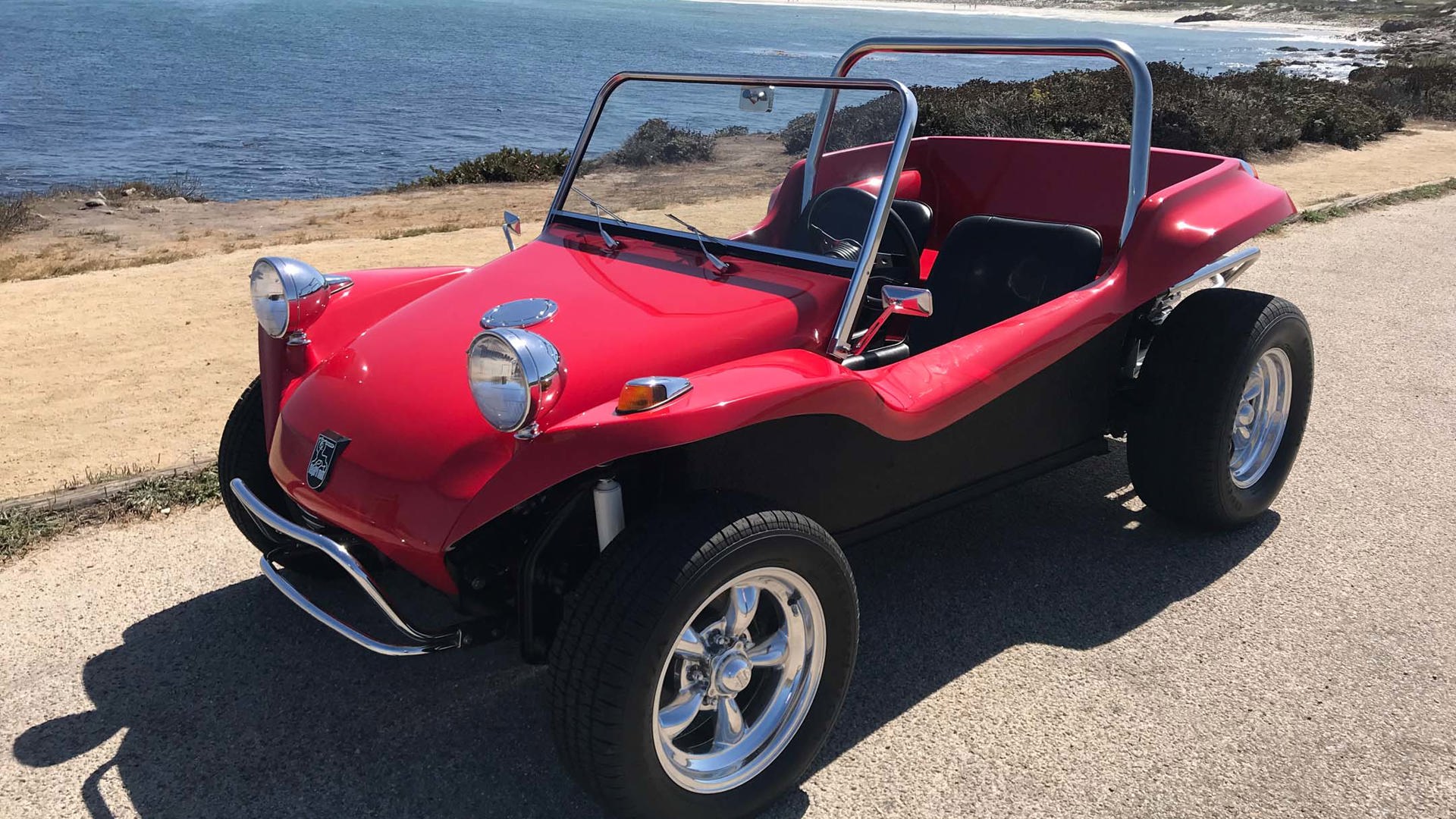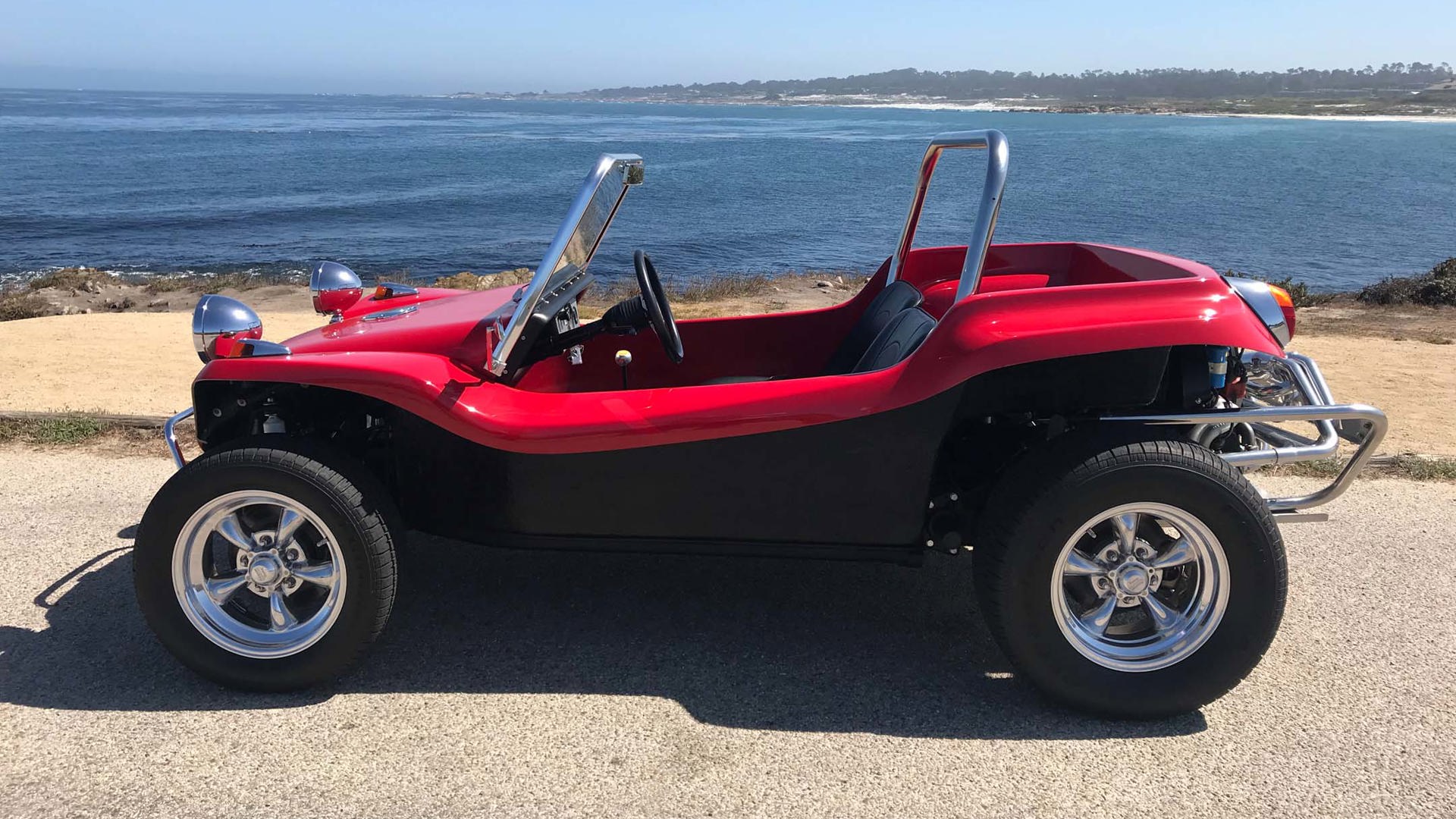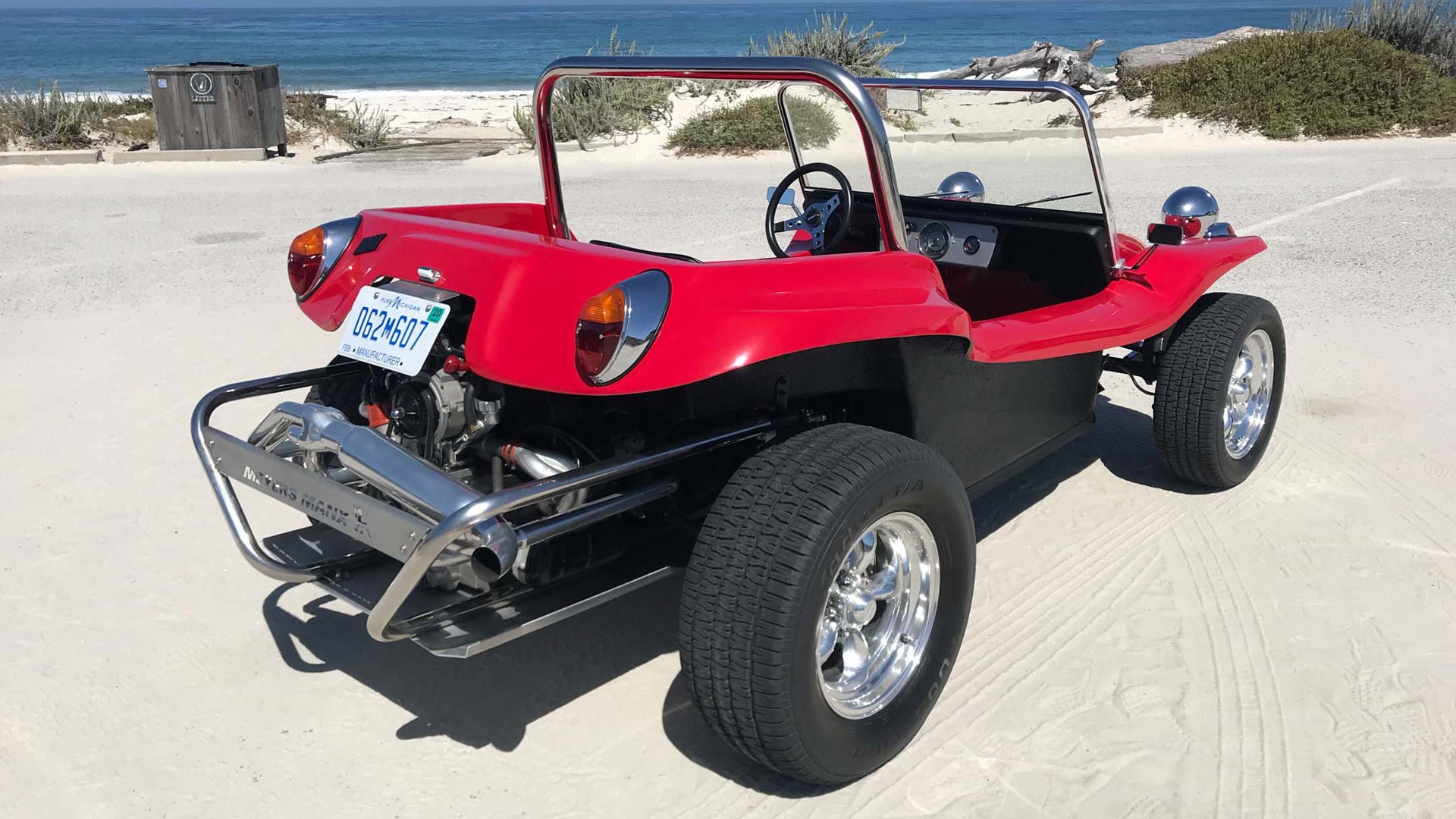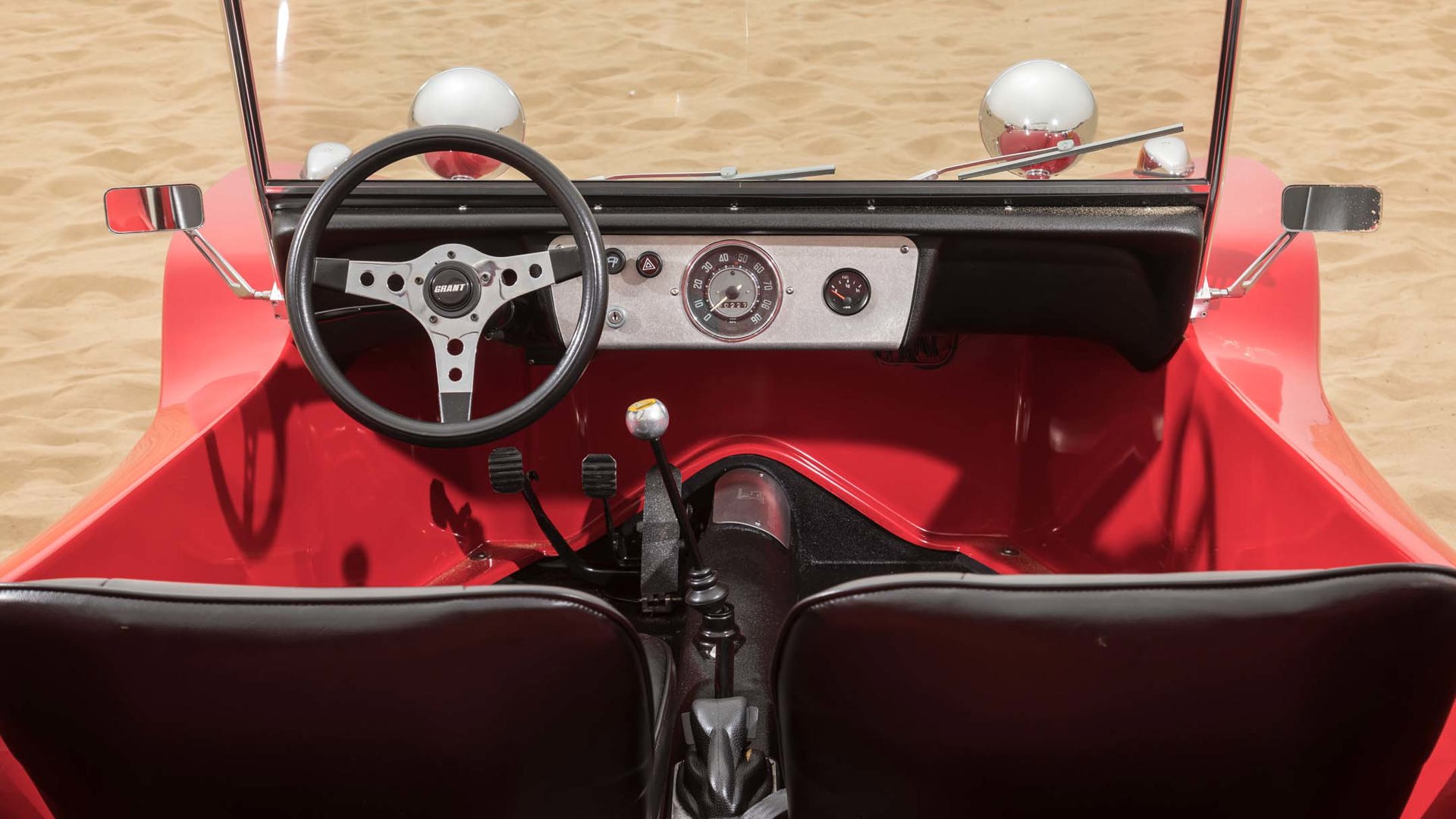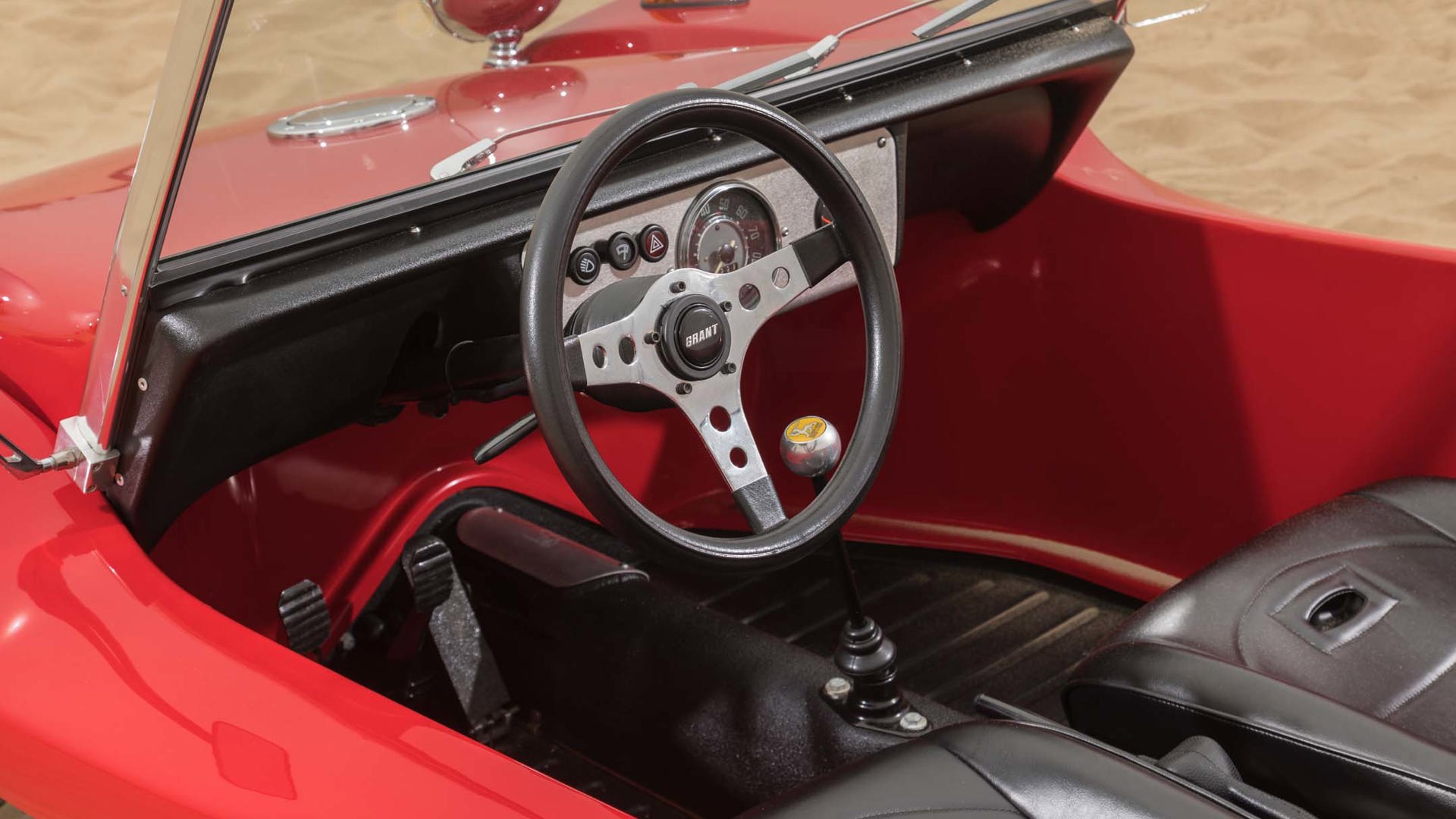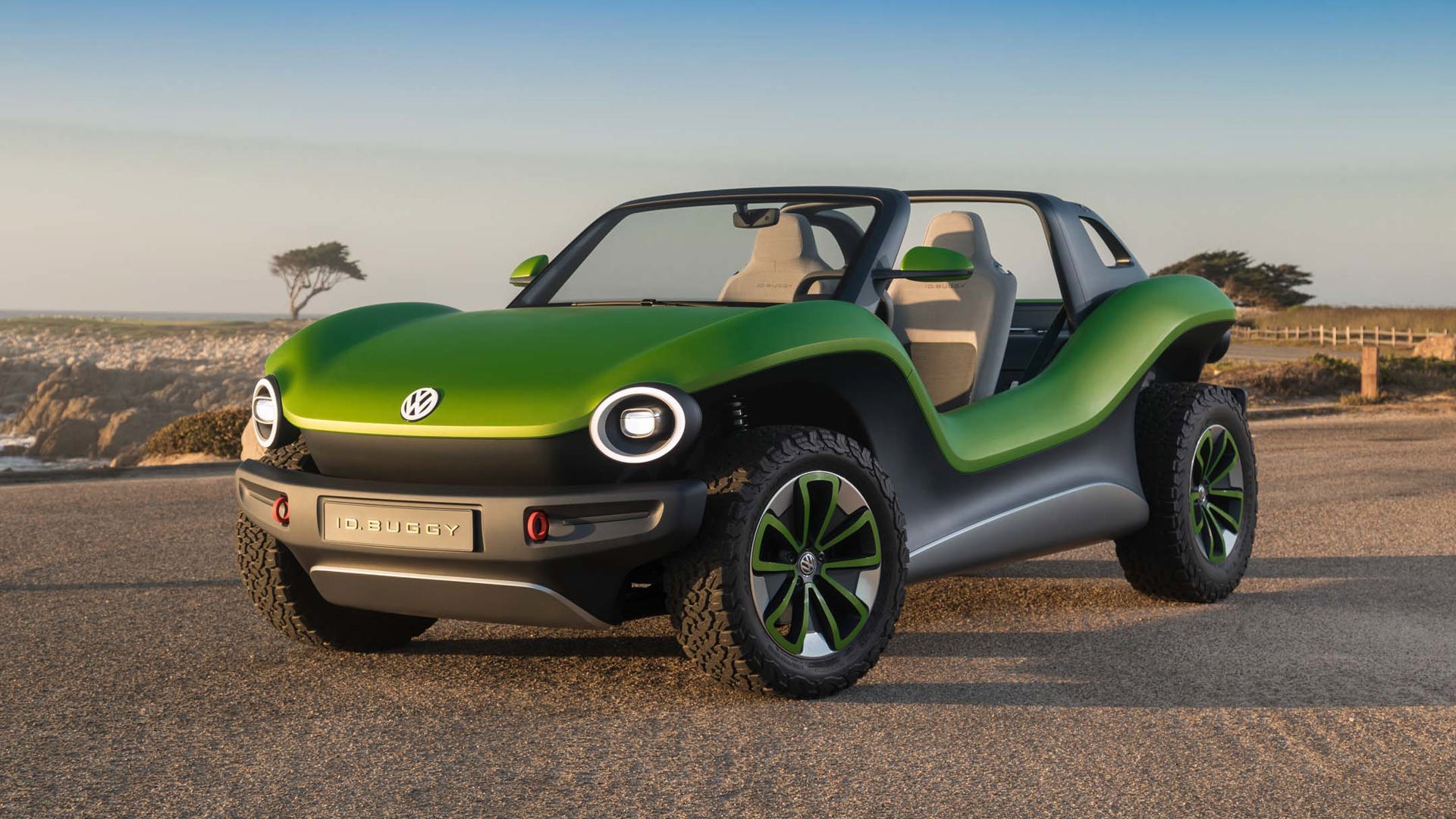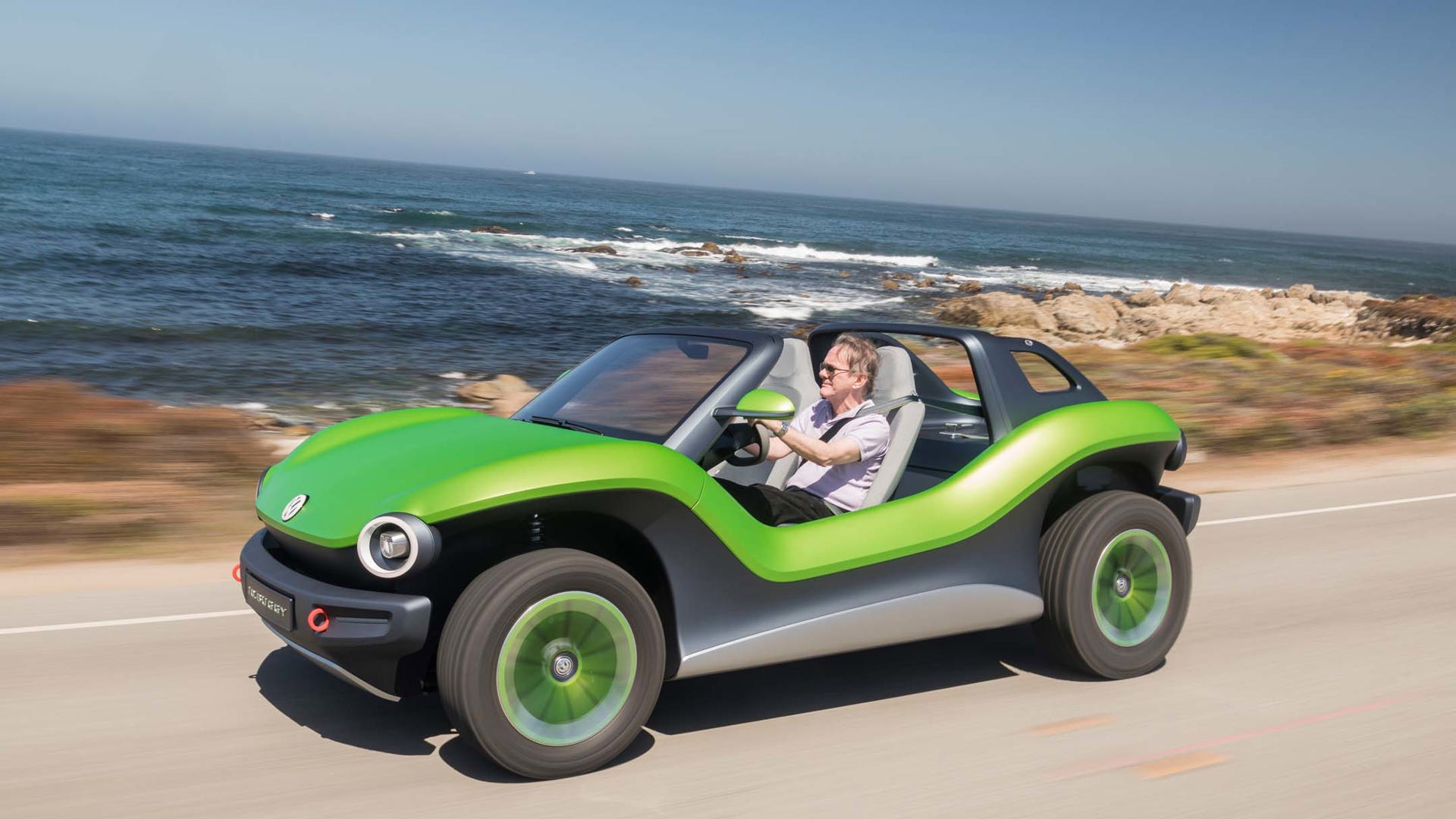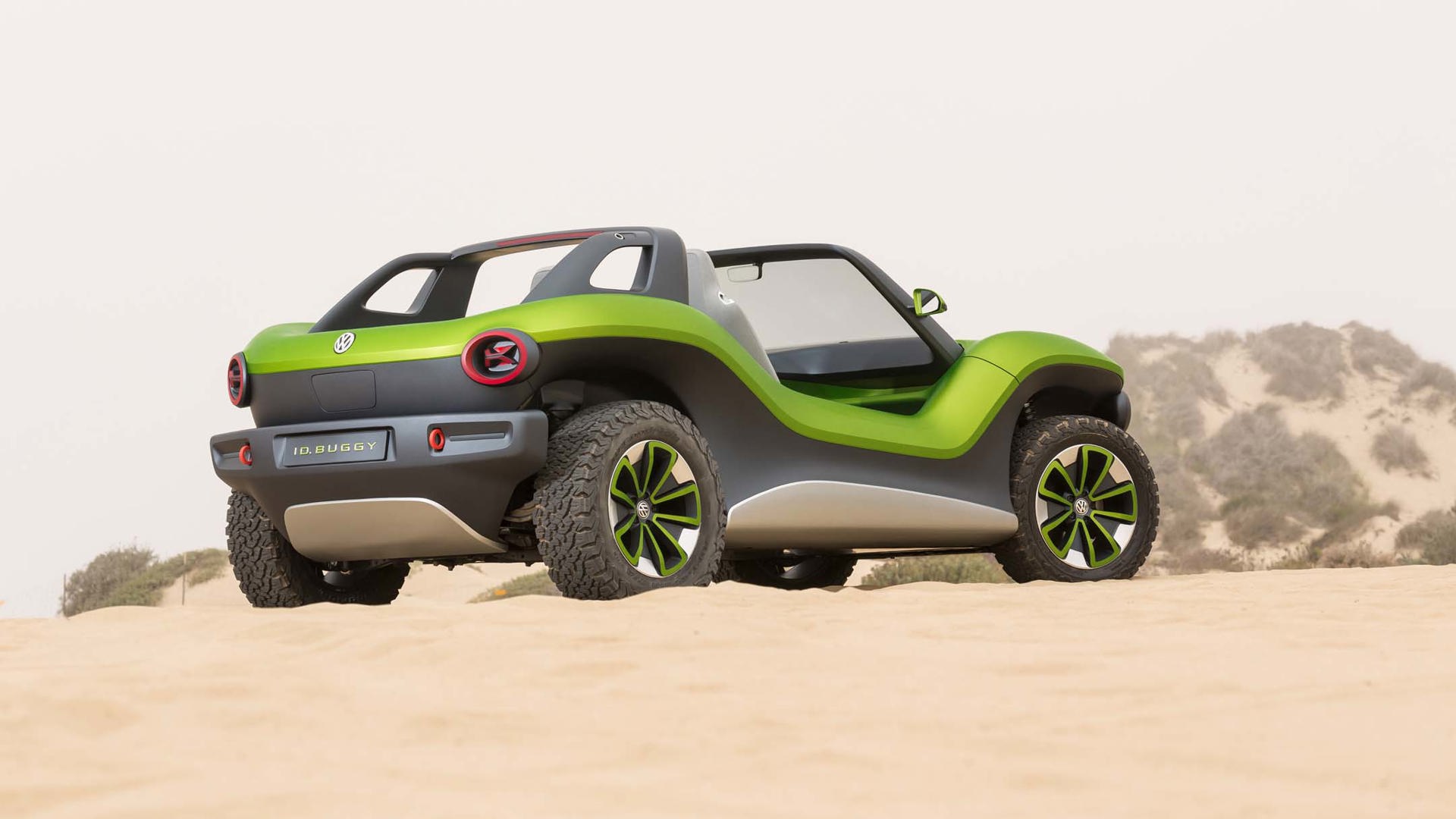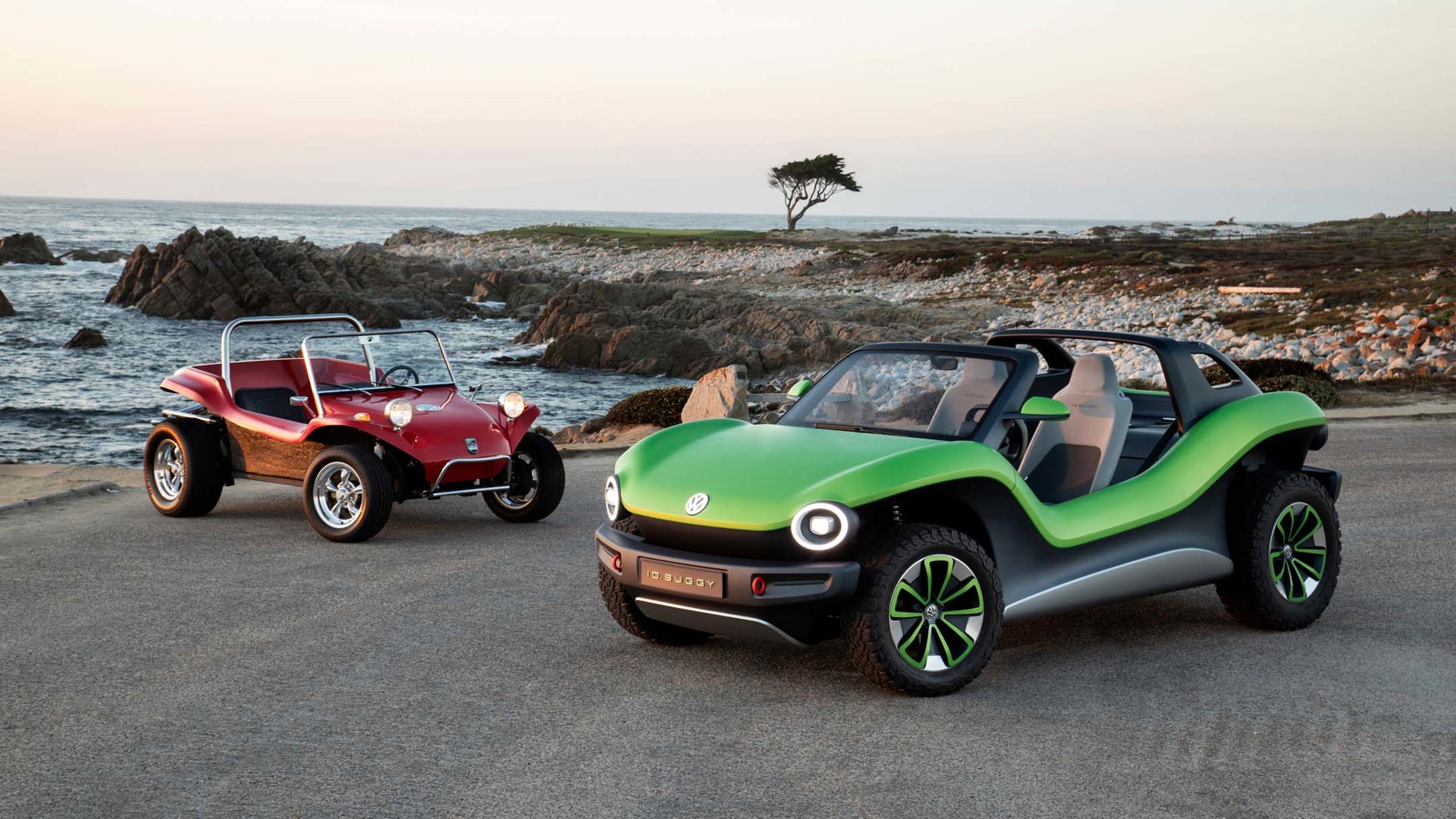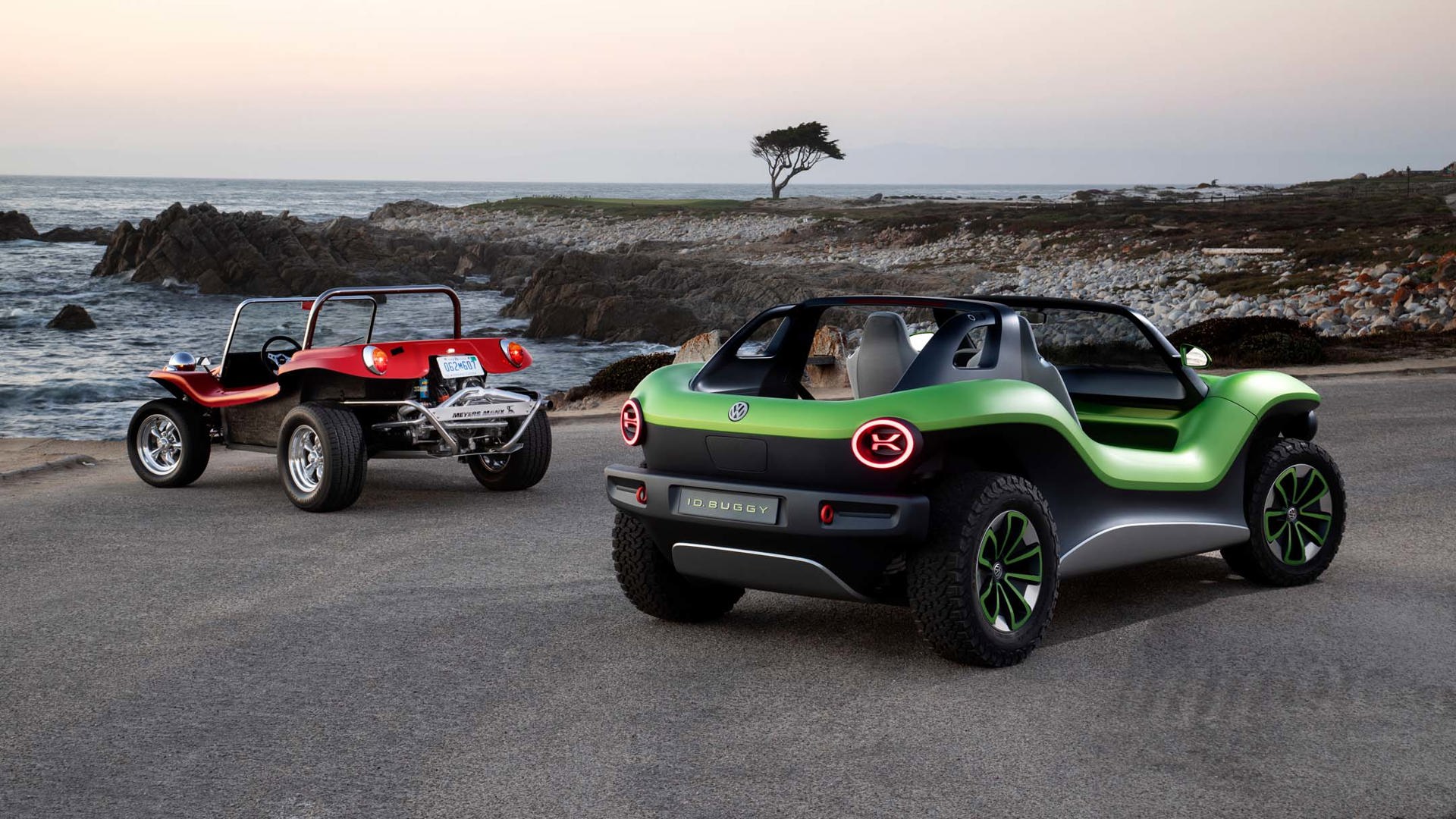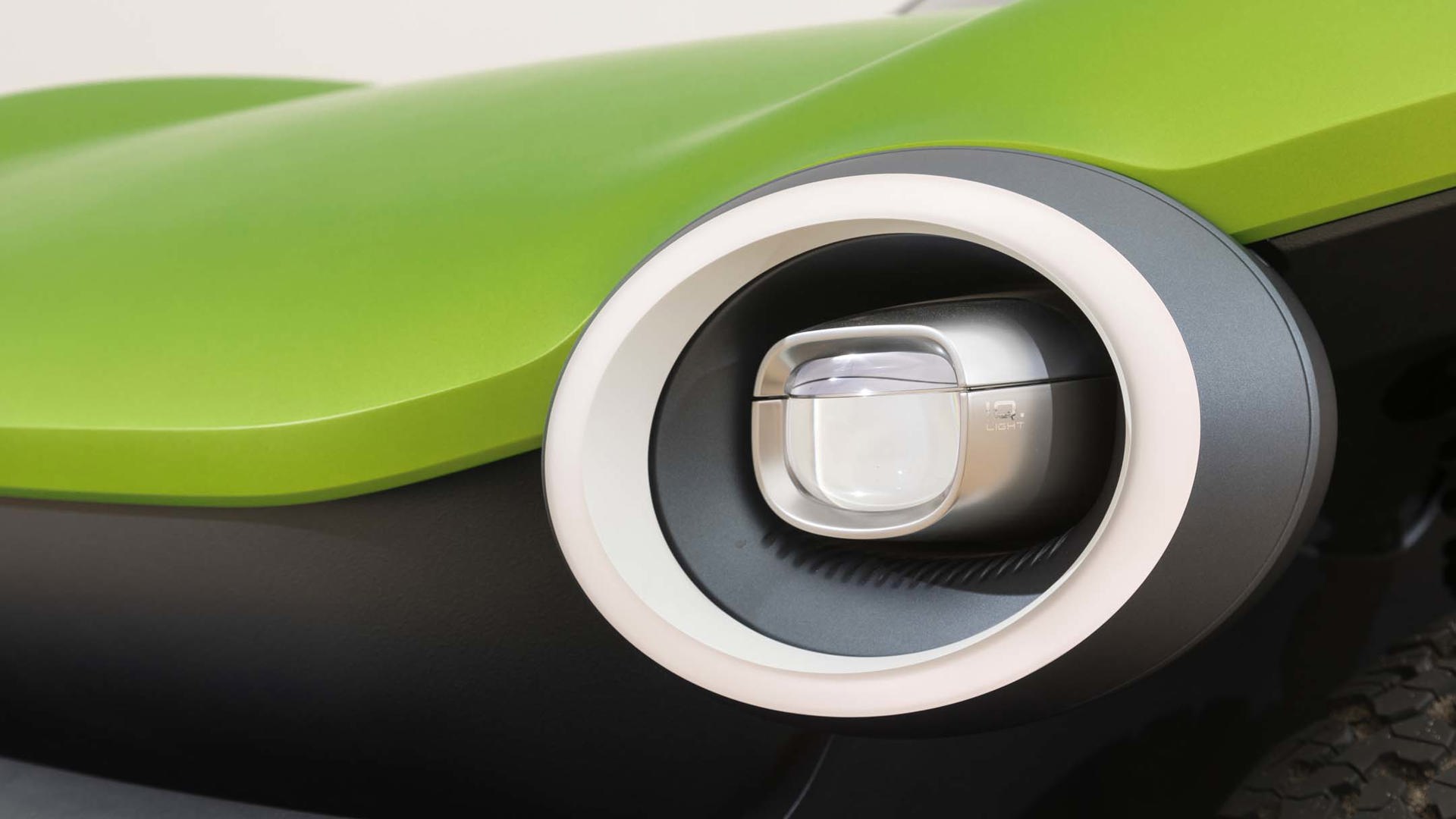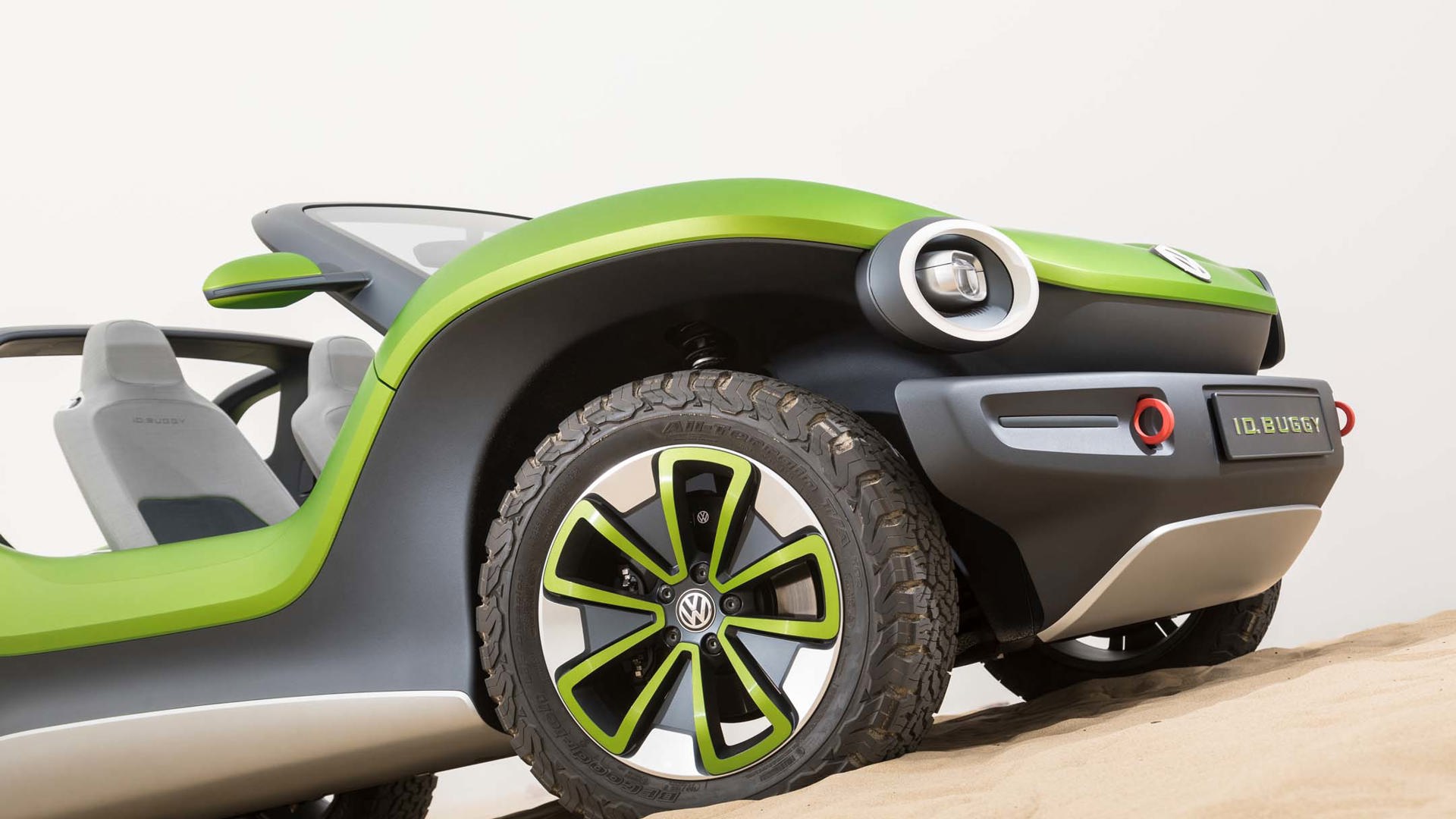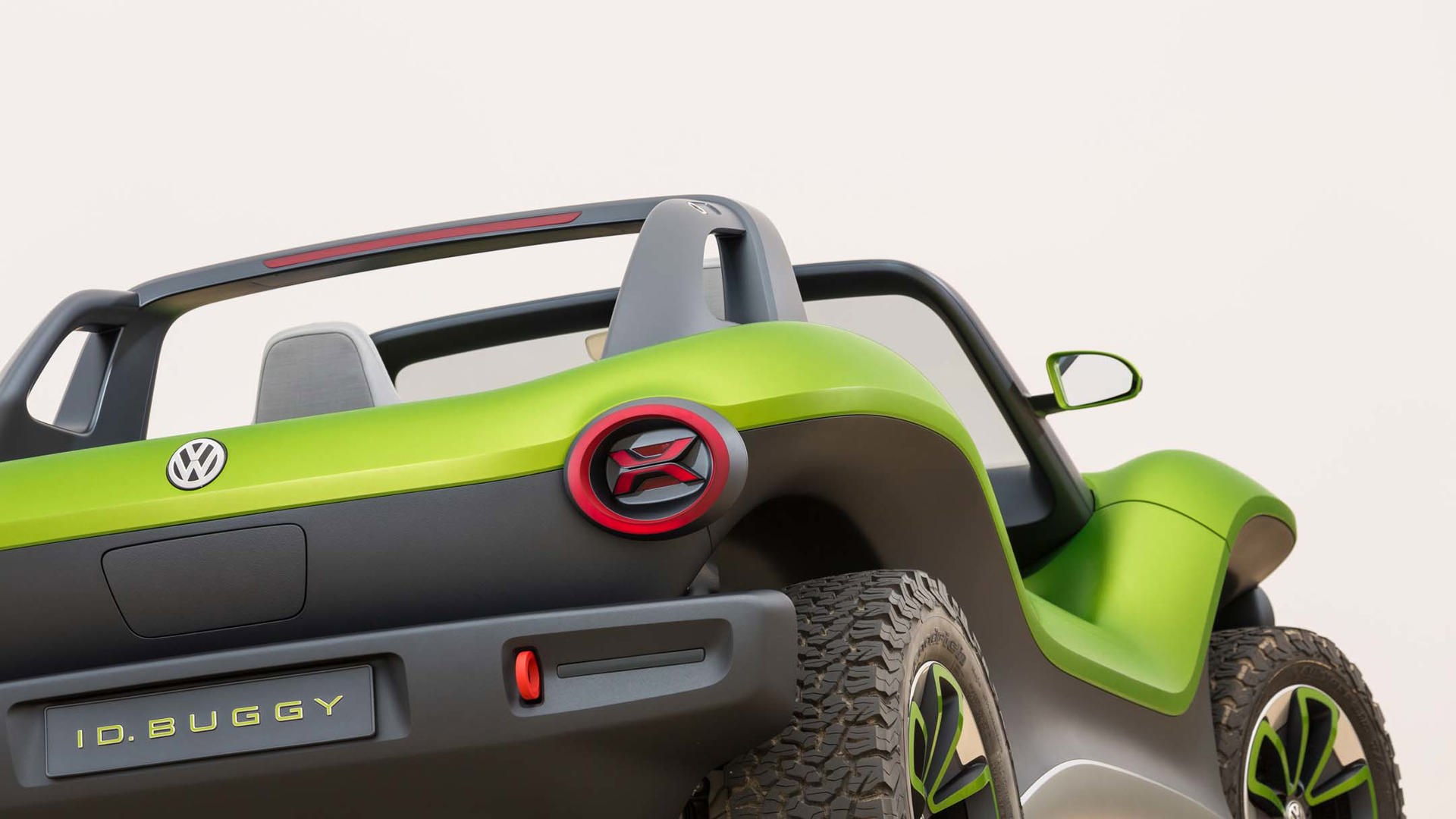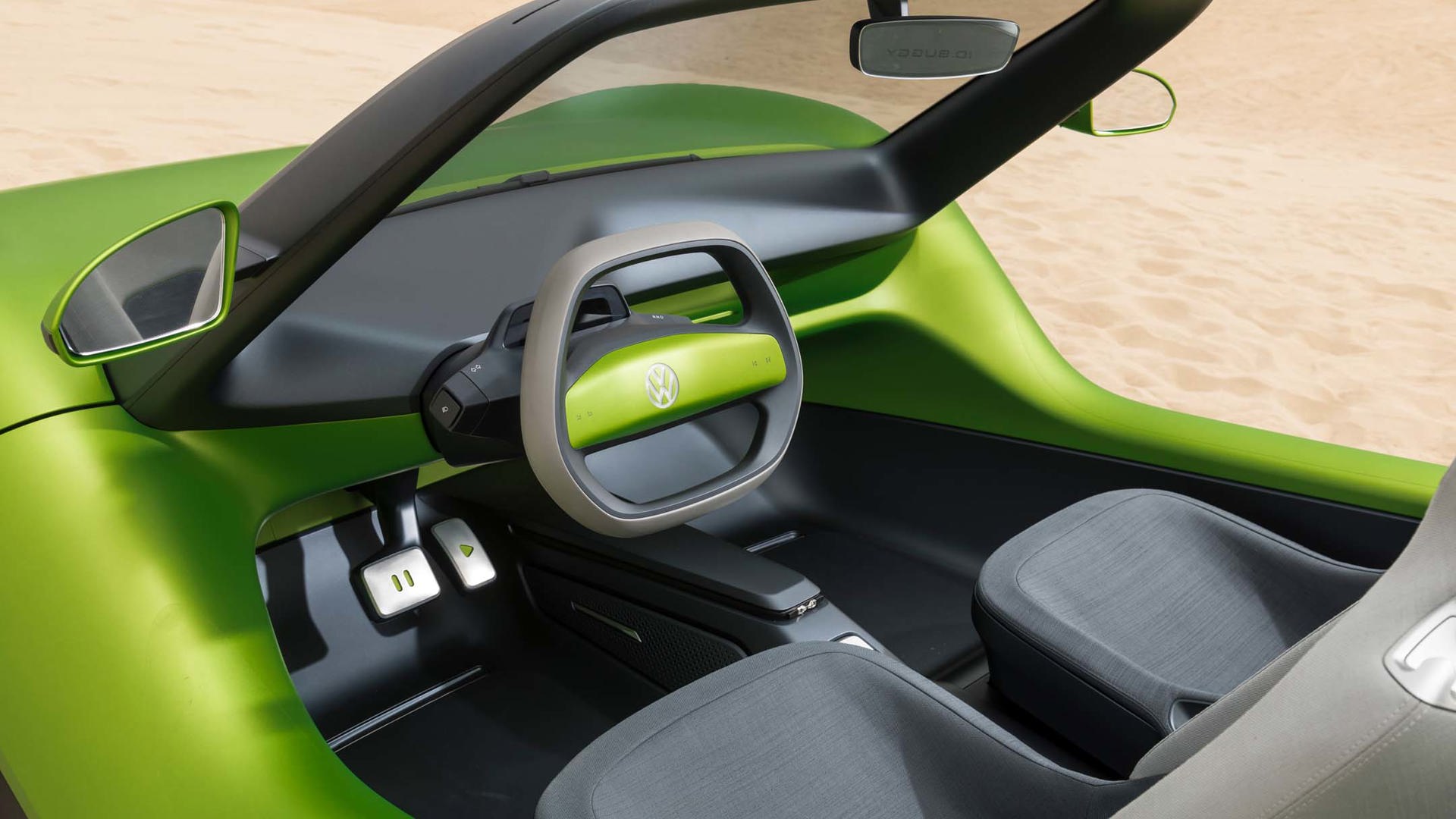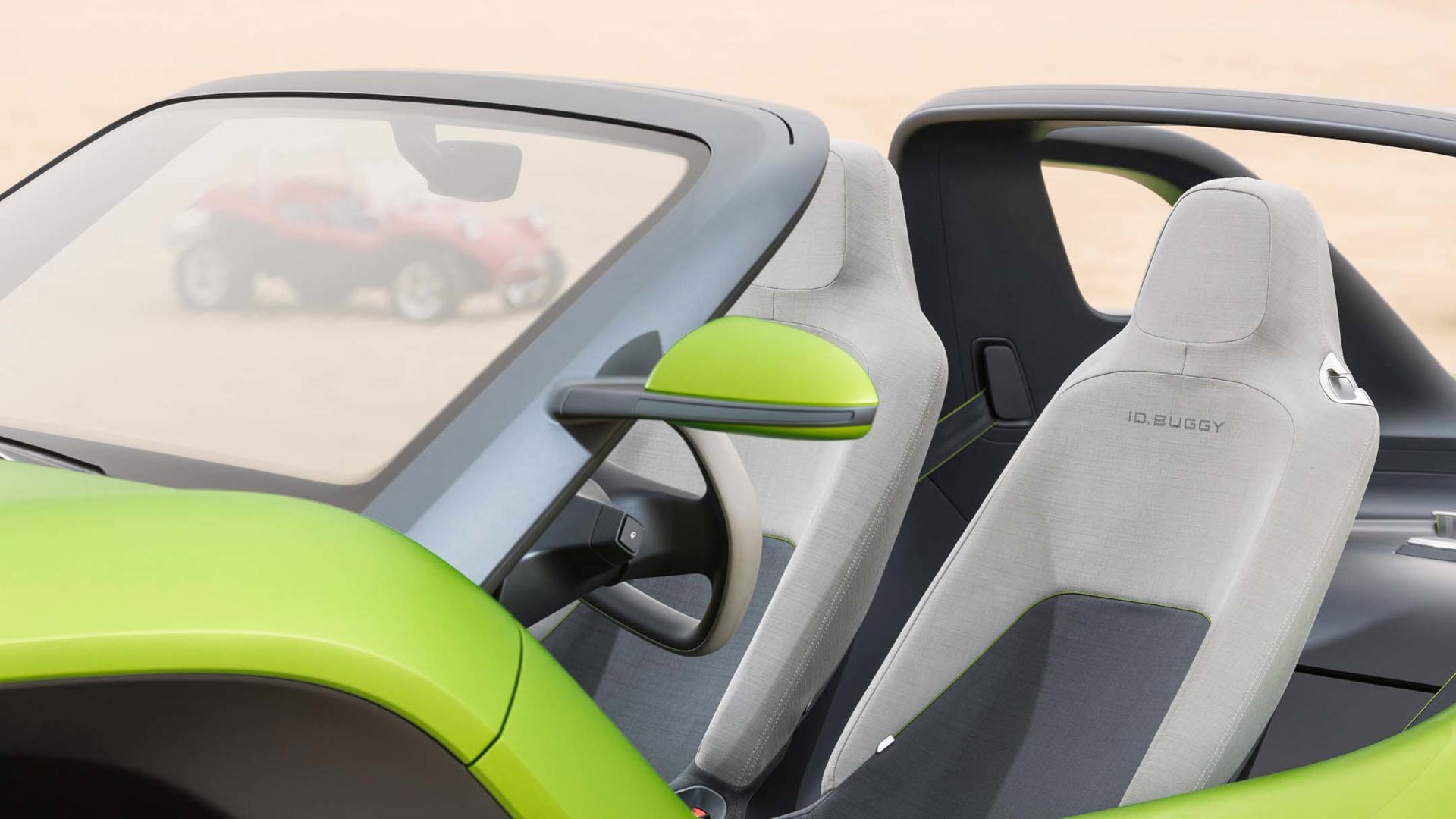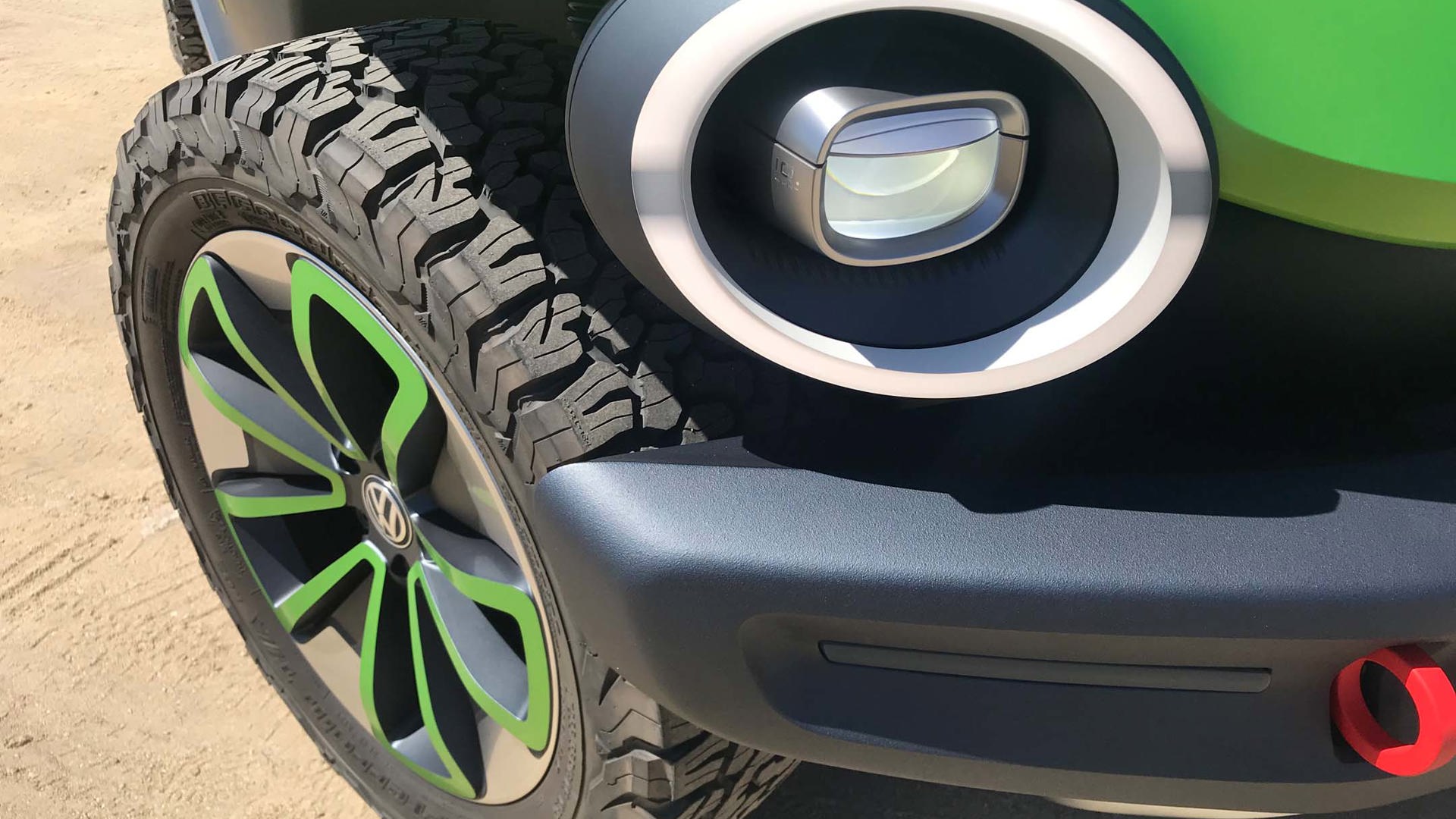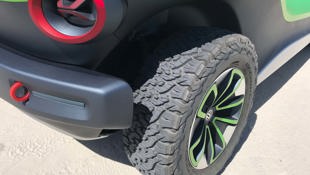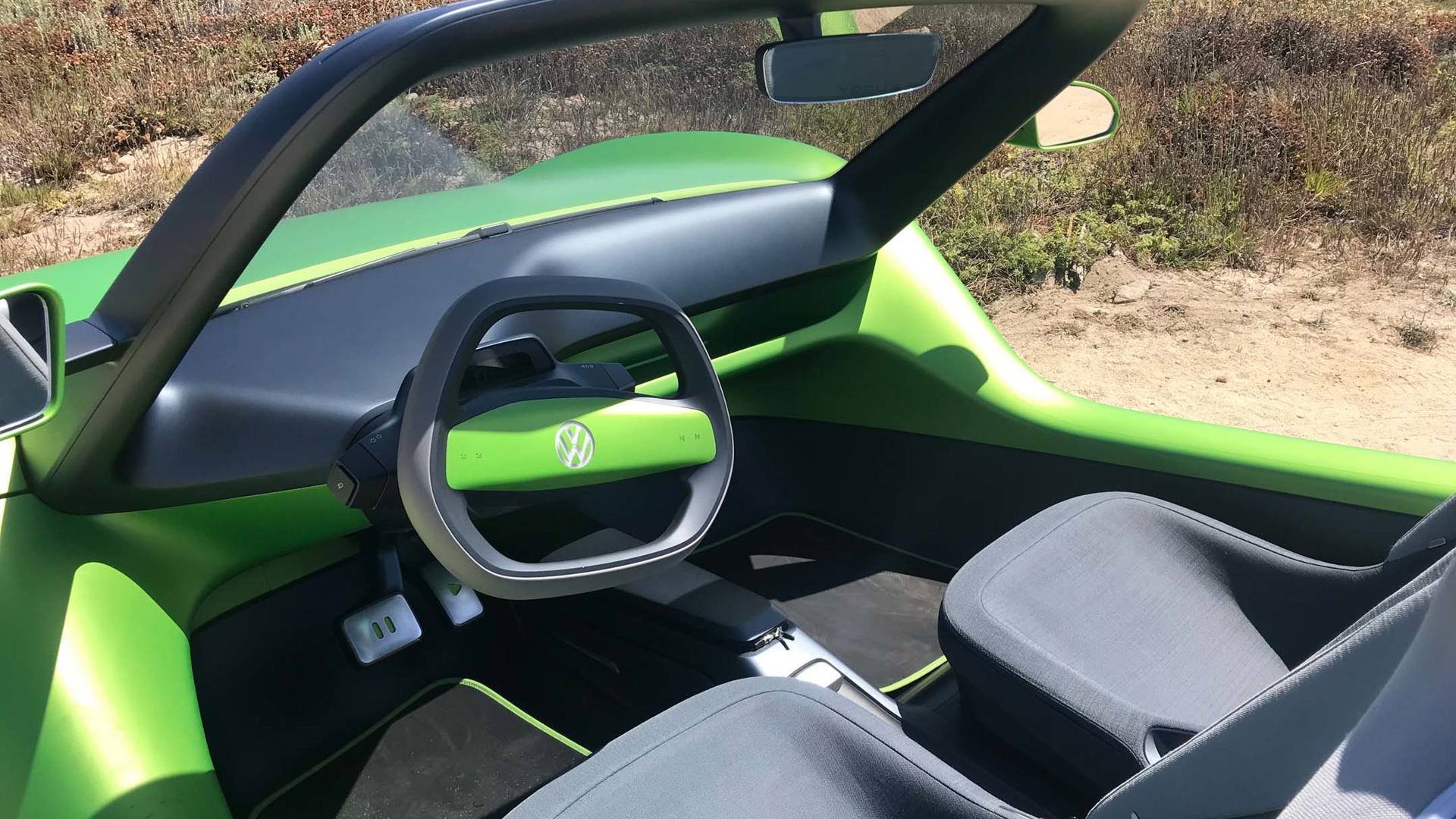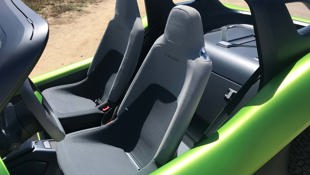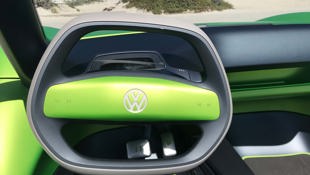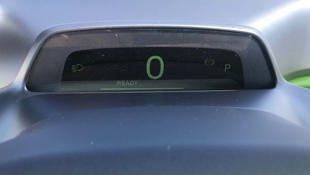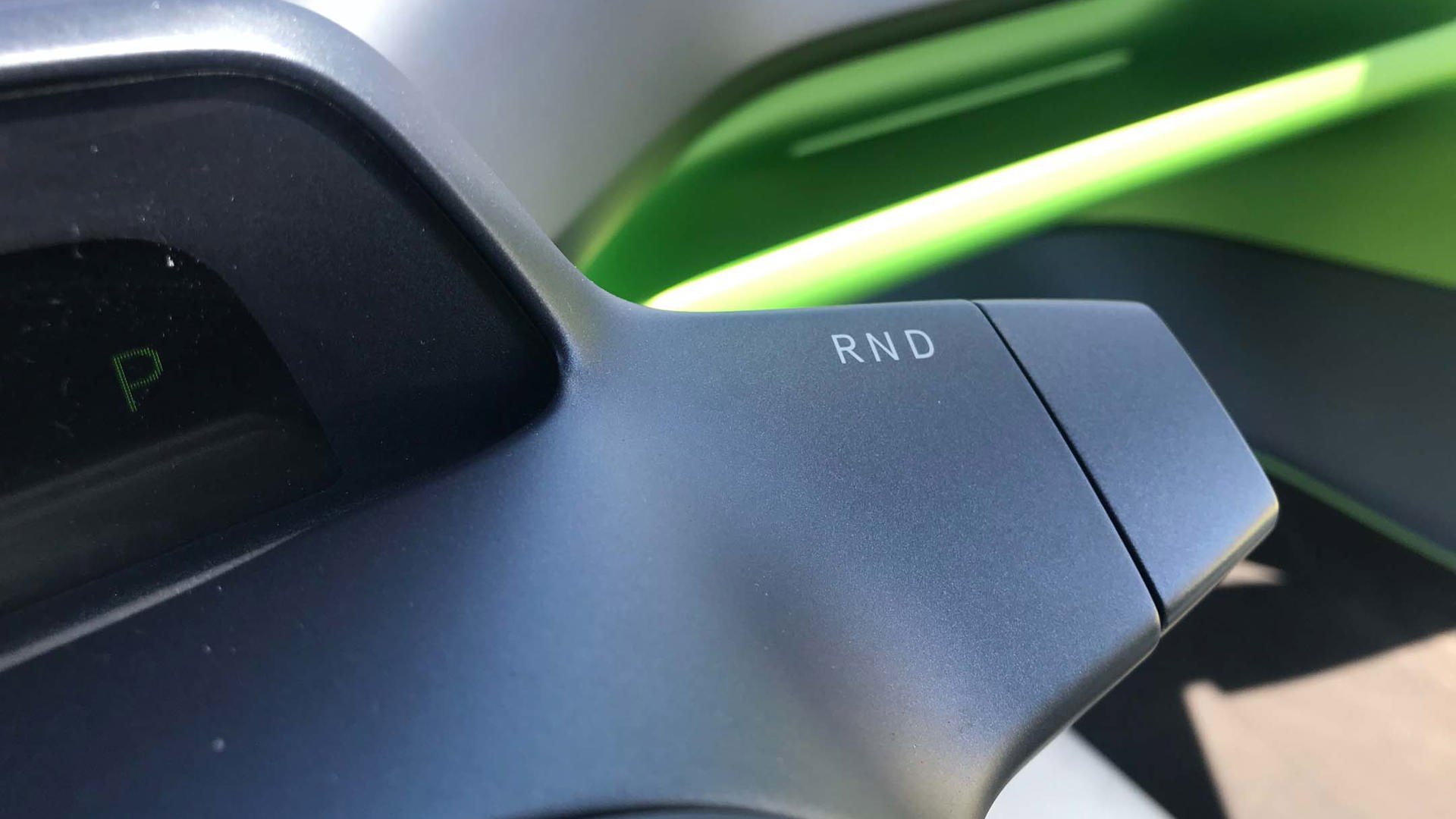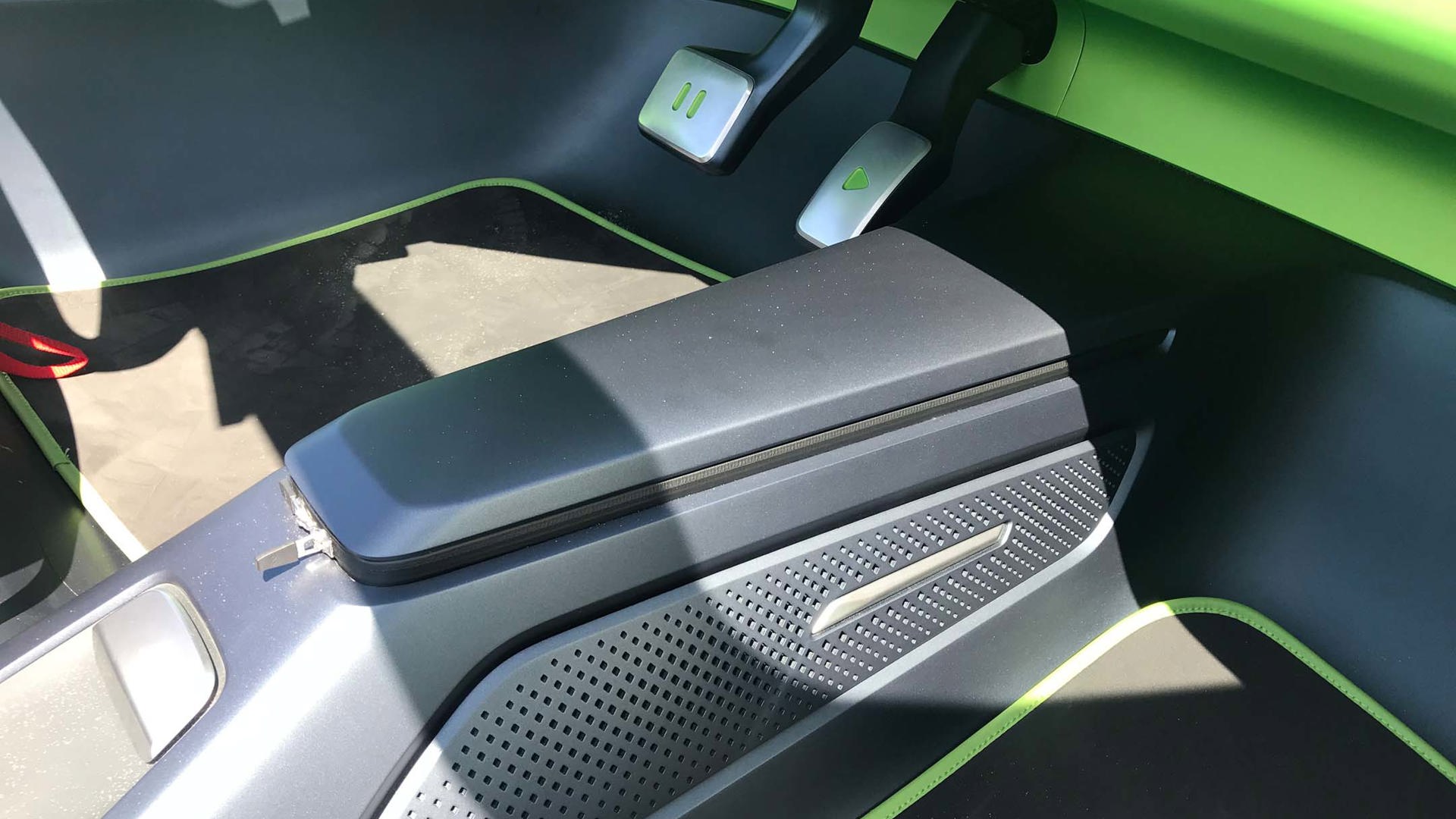PEBBLE BEACH, California – The famous 17-mile Drive near Carmel, California, which winds past some of the most beautiful coastal scenery in North America, was the perfect backdrop for our first drive of the new Volkswagen ID. Buggy prototype. VW’s California-inspired, retro-styled, battery-powered tribute to the Beetle-based dune buggies of the 1960s and 70s is not yet confirmed for production, but if it is, VW will licence a third party to produce it. Understandably, VW wants to concentrate on building high-volume vehicles that make more money. For now, there is only one road-ready prototype of the ID. Buggy and we were lucky enough to drive it.
Modern update of the classic dune buggy
Built on VW’s new MEB platform which underpins the upcoming ID. Crozz, ID. Buzz and ID. Vizzion, the ID. Buggy’s retro styling is true to the spirit of 1960s dune buggy design, notably the original Meyers Manx. The ID. Buggy has no doors, no top, no side or rear windows, and a spartan interior with weatherproof seats and drain holes in the floor in case it rains. Of course, it never rains in California – but if you’re in Canada, you may want to attach an available black roof tarp between the Targa bar and windshield frame for protection.
VW’s stylists cleverly imitated the appearance of the classic dune buggies by painting the upper body in Fern Green and the lower part in dark Grey Tech Blue, though the two are actually one piece. Silver-coloured sills at the lower sides, front, and rear of the ID. Buggy adds a bit of lightness to what would otherwise be a heavier, drab lower body appearance.
In front, the projector headlamps mounted at the leading edges of the low hood have circular halo-like daytime running lights; while at the rear, similar red circular lights surround the taillights. Sturdy black bumpers with built-in tow hooks and fat, knobby 18-inch wheels and tires complete the rugged go-anywhere look.
Interestingly, the body of the ID. Buggy can be detached from the underlying MEB platform so that authorized third-party manufacturers can experiment with their own body designs – similar to the way dune buggy manufacturers in the 1960s manufactured different body designs for a common, shortened VW Beetle floor pan.
Interior is a model of simplicity
As there are no doors, getting into and out of the ID. Buggy requires some interesting body contortions. The best way to get in is to sit sideways on the rounded body sill, slide backwards into the seat, and swivel your legs around and under the steering wheel – not recommended for people in short skirts or those with back problems. Once aboard, the wraparound seats hug the body comfortably, the steering wheel falls comfortably to hand, controls are easy to reach, and visibility is excellent.
The ID. Buggy’s interior is a model of simplicity: two high-back bucket seats covered in a durable, waterproof fabric (note the drain holes in the seat bottoms) are mounted on a hard, carpet-less floor; and a small hexagonal steering wheel with integrated buttons for Bluetooth audio is positioned in front of a simple horizontal digital gauge behind the steering wheel displaying digital speedometer and gear indicator. Stubby stalks for turn signals and transmission shifter are on the left and right respectively.
Though the ID. Buggy’s basic controls are easy to operate and it’s easy to drive, the interior is necessarily spartan. To achieve its minimalist design philosophy, many features were deliberately left out of the ID. Buggy – notably a heater and air conditioner, radio, windows, dashboard and interior trim, console, and carpets. There are, however, a single Bluetooth speaker between the seats, two flexible grip cupholders, and a centre storage bin. And at the rear is a small trunk that can carry a small bag and straps for holding cargo.
Powerful battery provides decent performance
The ID. Buggy features a 62-kWh lithium-ion battery under the floor and a 150 kW electric motor driving the rear wheels. With 201 horsepower and 228 lb-ft of torque, the ID. Buggy is reported to go from zero to 100 km/h in 7.2 seconds – pretty quick considering that it weighs about 1,500 kilograms. However, our limited test drive was restricted to 35 mph on the scenic, tourist-crowded 17-mile Drive through Pebble Beach and Pacific Grove, so we couldn’t do a proper acceleration test. We can say that its off-the-line acceleration is brisk and acceleration is smooth and linear, and it cruises quietly and comfortably.
There was talk at the event that designers contemplated adding an electric motor on the front axle to make the ID. Buggy a true four-wheel-drive vehicle.
No official government figures were available, but Volkswagen estimates average energy usage at 18–20 kWh/100 km depending on driver aggressiveness, trip length, ambient temperature, and other factors. Stated range is about 250 kilometres, while charging time to 80 percent capacity is about 12 hours using a Level 2 charger and about 30 minutes with a DC Fast Charger.
Ride and handling more refined than expected.
With its big, knobby 18-inch off-road tires, high ground clearance, and dune buggy styling, the ID. Buggy looks like a rugged off-road vehicle, but is actually extremely refined in its road manners. The ride is smooth and comfortable and it feels very stable when cornering in part because it has such a low centre of gravity and a wide track. The steering is basically effortless and braking feel is firm and powerful. And of course, it’s very quiet. The ID. Buggy drives sort of like a large, powerful golf cart – and that’s no criticism.
Without side windows, rear window, or roof, strong side winds can buffet the driver and passenger and outside noises – from the wind, road, and other cars – can be intrusive. On the positive side, when you can feel the warmth of the sun, hear the surf crashing, and smell the ocean breeze, being in an open car is not such a bad thing!
Windshield and Targa bar offer rollover protection
Crash test information is not available, but the ID. Buggy’s rear Targa bar and front windshield are designed to support the car in a rollover. As well, it’s built on the new MEB electric car platform which has doubtless undergone rigorous safety testing. There are safety belts but we didn’t see any airbags.
As it’s not a production vehicle, the ID. Buggy has no established pricing, but any third-party derivative of this prototype is likely to cost more than a Volkswagen e-Golf, which puts it in the $40–$50K range – or higher. That’s not inexpensive, but for buyers who want the exclusivity and driving fun of a modern, electric-powered dune buggy for weekend adventures, the ID. Buggy may seem like a good value.
